Synology BeeStation – Should You Buy? (Short Review)
Of all the products I’ve spoken about from Synology in nearly 25 years of solutions, the new BeeStation is possibly one of the most conventional yet surprising they have ever released. We first spoke about the BeeStation, otherwise known as the BST150-4T, halfway through 2023, when we started hearing rumors about Synology’s new entry-level solution that was shaping up to challenge the likes of WD My Cloud and My Book solutions. Synology has been providing impressively capable personal cloud solutions for a considerably long time, but it would be fair to say that for the majority of users who just want a simple cloud solution that is easy even for a child to set up, DSM isn’t quite as straightforward as they would like. The BeeStation and BSM hope to remedy this with Synology providing what is potentially the most user-friendly and easy-to-use personal cloud solution they have ever provided, as well as inviting positive comparisons against the likes of Google Drive and iCloud in terms of price. Roll in the fact that the system already arrives pre-populated with four terabytes of storage and is priced at just $199, and what you find here is one of the biggest brands in the world in network attached storage trying to reinvent the wheel that they themselves had a big part in designing! If you are reading this, it is because you are wondering whether the Synology BeeStation is the perfect fit for your simple, low-scale, and low-cost private cloud. So today, I want to tell you the five reasons why I can highly recommend the Synology BeeStation, as well as providing five reasons why you might want to give it a miss.
UPDATE – You can watch the FULL YouTube Review of the Synology BeeStation HERE
Or Read the FULL Massive Beestation Review HERE
Please note – This review is being conducted on a BeeStation 4TB NAS system with pre-launch software, so there is every opportunity that a number of the criticisms below may be addressed at launch on March 6th 2024. It is recommended that you read our full and extensive deep-dive review on the Beestation when it is live.
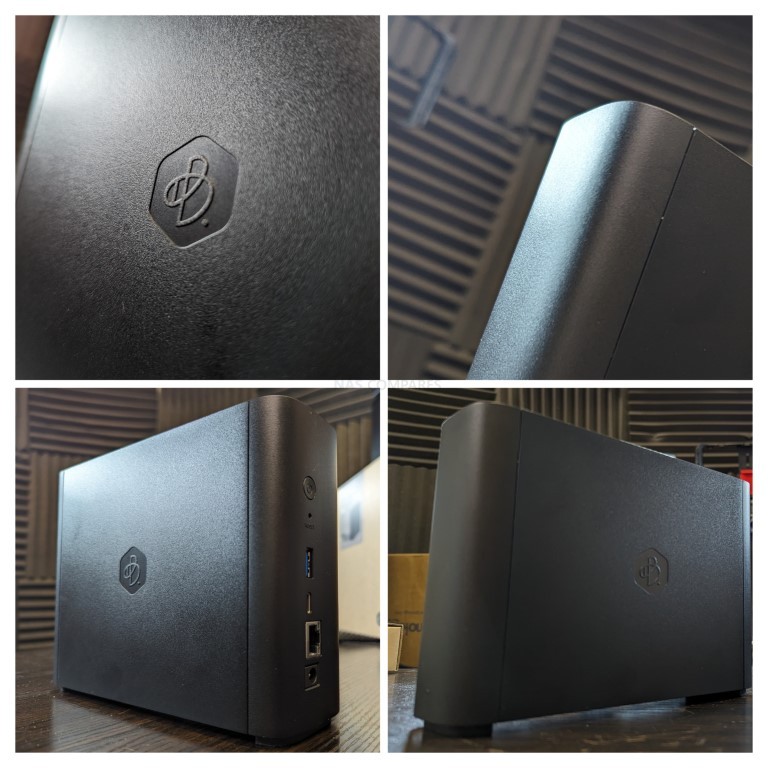
Synology BeeStation Personal Cloud Review – Quick Conclusion
Synology has clearly done their homework on the development and presentation of the BeeStation private cloud. They are targeting a whole new audience with this system, and therefore, criticisms based on experiences with their other hardware are likely to fall on deaf ears. The BeeStation is probably one of the best middle grounds I have ever seen between an easy-to-use and exceptionally easy-to-set-up private cloud system, while still managing to provide smooth and seamless features for accessing and sharing your private cloud’s storage securely. Looking at this system with a more network-savvy microscope kind of defeats the point, and I’ve tried to be fair in my assessment. The lack of LAN access by default seems a little odd, and launching the BeeStation series in this single-bay, 4TB-only fashion may be a bit of a marketing misstep, but overall, what you’re seeing here is an effectively priced and scaled private cloud system. It’s a fantastic alternative to third-party clouds and existing simplified NAS systems. With many users keeping an eye on their budgets and tightening costs, Synology, known for its premium position in the market, had a challenge scaling down to this kind of user. However, I have to applaud Synology’s R&D for creating a simple and easy-to-use personal cloud solution that still carries a lot of their charm and great software reputation. It may not be as feature-rich as DSM, but BSM does exactly what it says it will do, and I think the target audience it’s designed for will enjoy the BeeStation a great deal!
| Where to Buy a Product | |||
|
|
    
|

|
VISIT RETAILER ➤ |
 |
    
|

|
VISIT RETAILER ➤ |
 |
    
|

|
VISIT RETAILER ➤ |
 |
    
|

|
VISIT RETAILER ➤ |
 DEAL WATCH – Is It On Offer Right Now? DEAL WATCH – Is It On Offer Right Now?These Offers are Checked Daily
|
Reasons You Should Buy the Synology BeeStation
Synology has done an incredible job here of changing a number of core tenets about their existing large NAS series to produce the far more streamlined BeeStation system. Here are five reasons why it certainly gets my recommendation. Before we go further though, what about those hardware specifications? What keeps this system going?
| Specification | Details |
|---|---|
| CPU | Realtek RTD1619B |
| RAM | 1GB DDR4 |
| Storage Capacity | 4TB built-in HDD |
| Networking | Gigabit Ethernet; No Wi-Fi capability |
| Ports | 1 x USB-A 3.2 Gen 1, 1 x USB-C 3.2 Gen 1 |
| Operating System | BeeStation Manager (BSM) |
| Cloud Integration | Supports Google Drive, OneDrive |
| Remote Access | Via mobile apps and web interface |
| Number of Simultaneous Users | Up to 8 people |
| Supported Operating Systems | Windows, macOS, iOS, Android |
| Apps and Tools | BeePhotos for mobile, other integrated tools for photo and file management |
| Physical Dimensions | 148 x 63 x 196mm; Weight: 820g |
| Security Features | Encrypted data transmission; SSH not enabled by default |
| Local Access | Available post initial setup |
| Additional Features | Built-in AI for photo recognition, Facial and Object recognition speed boosts |
So, with that out the way, why should you consider the Beestation as your ideal private cloud solution?
The EASIEST Synology NAS You Will Ever Own
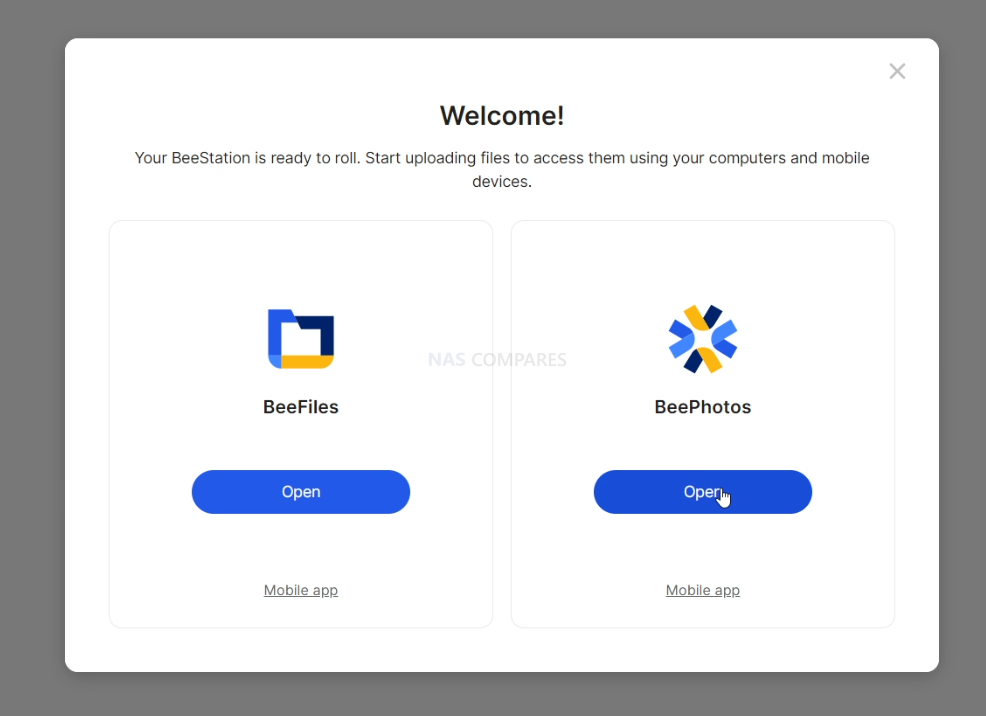
I really cannot stress enough how straightforward and easy it was to set up the Synology BeeStation, especially when compared to any other Synology NAS that I’ve utilized here on the channel or on the blog. Just to put it into perspective, here’s how setting up a normal Synology DiskStation NAS and setting up the Synology BeeStation compare. Setting up an ordinary Synology NAS takes around 15 to 20 minutes minimum, if you know what you are doing. You need to first install the appropriate storage media of hard drives and/or SSDs into the individual slots. Then, connect the device to your local area network and the power supply and boot up. You need to wait 2 minutes for the system to fully initialize, whereupon you begin the initialization process and download the latest operating system manually via the on-screen prompts in your web browser on a device connected to the local area network. Then, provide your login credentials and go into the storage manager to begin setting up your storage area, including your storage pools, volumes, and shared folders to distribute your data effectively. If you want to take advantage of services such as cloud synchronization, manage your backups, and create an online access account with Synology services, these will add something like 20 to 30 minutes to setup (even longer if you are factoring in more complicated RAID pools such as RAID 5 or 6).
Here is a 40+ minute video showing how to Setup a Synology DSM NAS (so NOT the BeeStation), to give you some idea of how long it takes Synology Diskstation systems:
Now, what about setting up the BeeStation? Well, you take the device out of its box, plug it into the internet, use absolutely any device, mobile or desktop, with an internet connection, and visit the Synology online portal. Then, enter the system serial number for the assistant to be found remotely to set up an account, and the device is genuinely ready to go in around 90 seconds.
Here is a 1-minute gif showing the Beestation setup in Realtime:
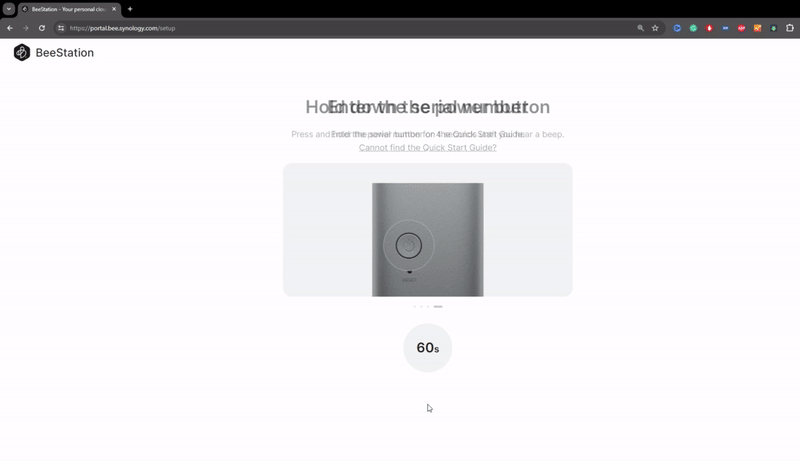
The system storage, sync, and backup applications, and creating the Synology account needed for remote access to the system are either all included in that first initialization or will add upwards of 30 more seconds to the installation. We are talking about one of the most foolproof cloud systems I have ever seen, with the added benefit that you can set the device up from cold boot in anything from 2 to 3 minutes. The logic for this extends to the general use of the system, with the BeeStation Manager software being extraordinarily straightforward and easy to use. We will get on to later the extent to which this software can be utilized, but if what you are looking for is easy-to-use, straightforward, and uncomplicated cloud management, the BeeStation definitely has your back!
Surprisingly Reasonable Pricing…Especially for the Included 4TB Storage
The $199 price point that the BeeStation arrives at, especially once you factor in exactly what you are getting for your money long-term, is extraordinarily impressive. Keep in mind, you’re not just getting the system on its own, but a ready-to-go remote access NAS cloud that also arrives with four terabytes of internal storage right out of the gate. To put this into perspective, if you were to utilize popular cloud services such as Google Drive, Dropbox, iCloud, and OneDrive, you would pay around $80 to $100 a year for two terabytes of storage on average. So, if you double this to cover the same 4TB of storage included with the Synology BeeStation, you find that the BeeStation costs within one year exactly as much as popular cloud storage providers, and, in the case of iCloud, actually costs less than the Apple cloud alternative in just one year.
Note – Prices for the 3rd party cloud services below may include other cloud services, but are also often limited to cost-per-user
But it does not stop there. Remember, with those cloud services, after one year, if you do not keep paying, you lose that storage area and will either have to accept its inevitable deletion or spend money on a storage device to pull that data off the cloud. The BeeStation, on the other hand, for that $199 is yours to keep long-term and, alongside arriving with 3 years of manufacturer’s hardware warranty, also comes with an effective lifetime support warranty covering updates, security, and feature improvements. Add to that the myriad of client applications and potential synchronization with larger Synology DiskStation devices down the line, and what you have here is extraordinary value for money when compared with third-party cloud alternatives, but also generally for the cost of a 4TB NAS device in general.
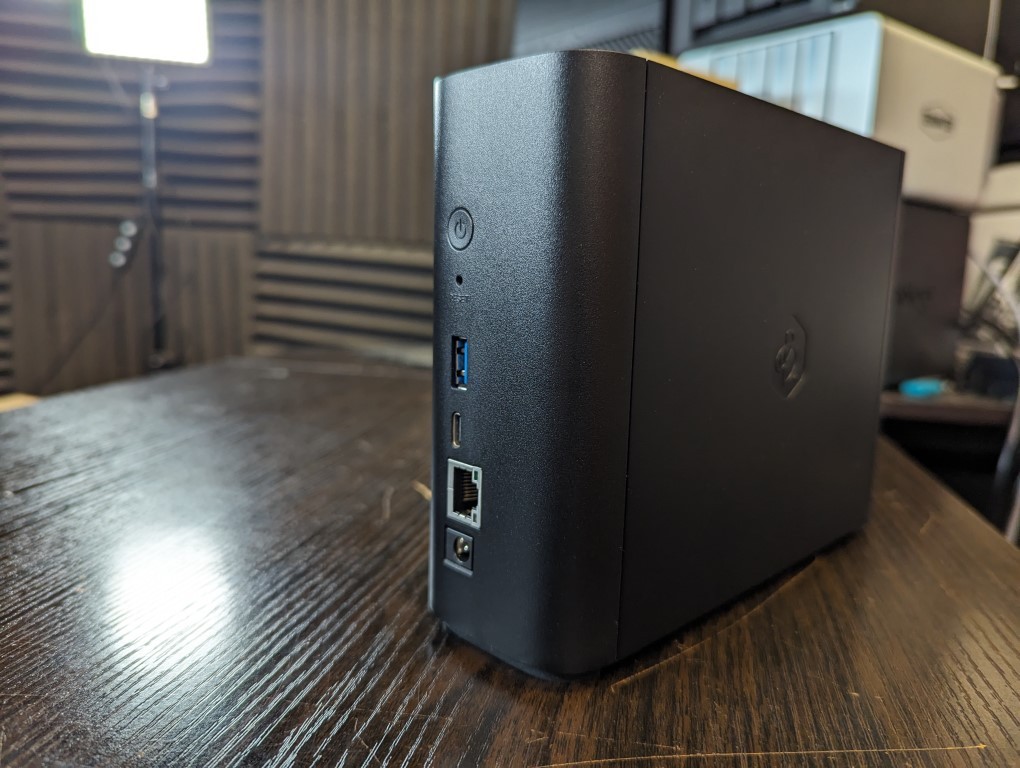
Sync with 3rd Party Cloud, NOT Just Synology C2
This is a very minor point for those out of the loop, but if you have been following Synology in recent years and the development of their NAS solution platform, you’ll know that they’ve been shifting focus towards first-party services and tools across their hardware lineup. You can understand the logic in them prioritizing their own hardware upgrades, storage, media, and even their own Synology software services when developing their own NAS hardware. While Synology’s platform does support a number of third-party hardware and software providers, it’s fair to say that in recent years they have definitely shifted focus towards prioritizing their own options first (for reasons of compatibility, synergy, and profitability almost certainly).
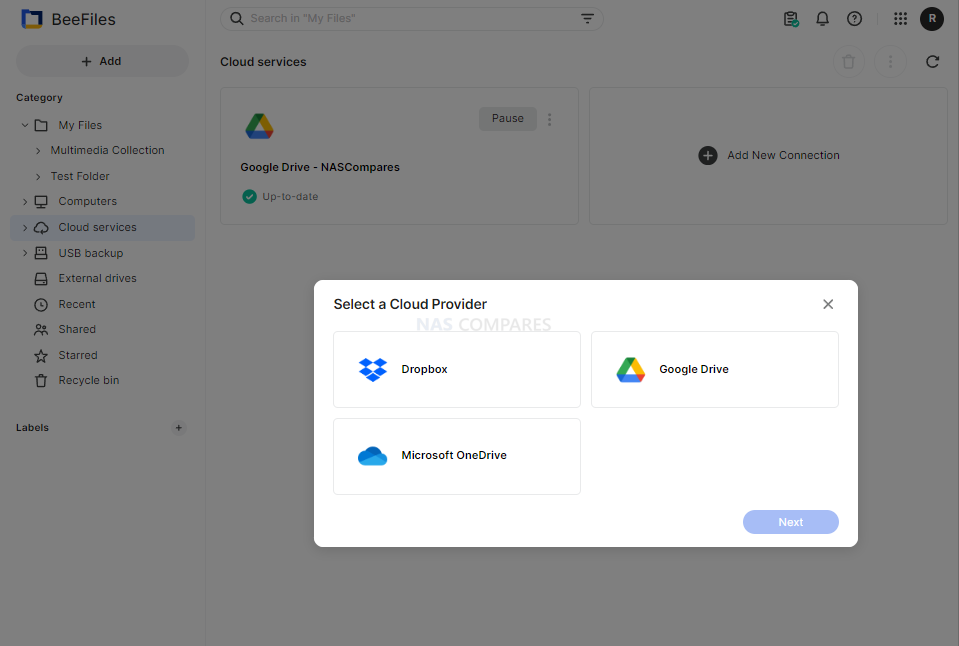
However, huge credit to them for how they have handled cloud synchronization on the BeeStation. For those unaware, cloud synchronization is when your physical NAS solution (commonly referred to as your bare metal) is synchronized with an internet-accessible cloud platform, either for use as a secondary access point for lower priority users or as a secondary backup location between your physical bare metal NAS and an off-site location. Synology has had their own cloud platform, Synology C2, for a number of years now, and it’s been growing in popularity and scale year on year. It would have been easy to limit cloud synchronization on the BeeStation to only their cloud platform, and given the price and target audience, many would not have been surprised. HOWEVER, the Synology BeeStation supports a number of third-party cloud platforms such as Google and OneDrive for cloud synchronization natively, without requiring any additional app or add-on. Full credit to Synology for still supporting synchronization with other cloud platforms when they already have their own in play. Of course, you can use Synology C2 if you wish, and there’s also an argument that Synology provided this to make it easier for users to migrate from those third-party cloud platforms to their own. Nevertheless, I really do have to give them credit for maintaining third-party cloud sync on this device.
REALLY Quiet Operation and Small Impact
Another thing that is going to be music to the ears of people who are simply looking for an alternative to third-party cloud providers in the form of a physical solution in their office or home with remote access, is that the BeeStation is phenomenally low impact in practically every way. The internal hardware configuration of the Realtek RTD1619B and 1GB DDR4 memory is a great middle ground between efficiency and system capability. Synology has been experimenting with this configuration of a 64-bit ARM processor and gigabyte memory for a number of years, with other solutions already arriving for more than a year with this hardware configuration.
This ensures that they’ve had ample time to make the most of what this config can do. Add to that, this system is tremendously small, small enough to fit in a big coat pocket or a laptop bag while barely being noticed, and well under a kilo in weight, making it surprisingly portable if need be. Finally, the system is almost completely noiseless and, thanks to the more modest 4TB hard drive inside (a Synology branded Plus Series value drive), the system is incredibly low noise when in operation. The casing that the BeeStation arrives with is a completely unique design compared to the rest of their hardware solutions and is easily one of the smallest they have ever produced. Ultimately, the point I’m making is that the BeeStation is going to be almost unnoticeable when deployed, even at close proximity.
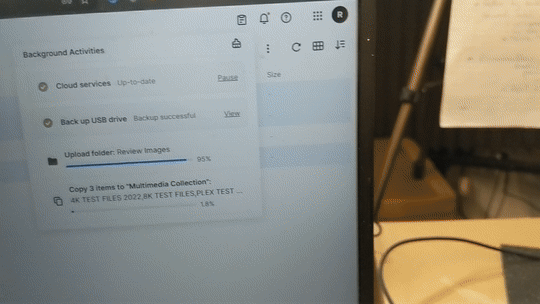
The BeeStation Fills the Gap Left by WD and Seagate in ‘Easy NAS’ Systems
Let’s be honest, although Synology has certainly retooled their existing NAS solutions to provide a far more streamlined private cloud solution here, they were not the first to design a product like this. When Synology first made it big all those years ago, they didn’t do it because they were the first in the market to provide this kind of solution; they became popular because, unlike alternatives from the likes of Seagate and WD at the time, Synology was providing a personal cloud solution that was also exceptionally capable and feature-rich compared to the more rudimentary options in the market that were effectively hard drives connected to the internet. Fast forward to now, and although Synology has continued to innovate, improve, and expand upon what is included in Synology DSM and their other bigger NAS systems, there are quite a lot of users who desire a more simplified private cloud solution as they don’t want to waste time or energy learning how to utilize their equipment – they just want it to do what it says it will do, and do it well! Over the years, brands like WD with their My Cloud and My Book systems have persisted. However, the personal cloud and small scale simplified NAS market has changed rapidly in recent years, and Western Digital has lost a lot of its market share for numerous reasons. The simpler-to-use WDOS that their My Cloud systems arrive with has struggled to find a balance between simplicity and rich features, leading to inconsistencies that have either annoyed the more technically aware or befuddled the more amateur. This on its own would probably not be so bad, but things got really bad for Western Digital.
Over the course of the last 4 to 5 years, WD has been beset by numerous failings across the different NAS solutions they have provided. One of the earliest and loudest was their use of SMR drives in their WD Red series, which led many to question whether WD had the right idea about what a NAS solution was supposed to do and offer. Then, a couple of years later, WD NAS solutions were hit by a remote hack targeted at deleting users’ data, caused by infrequent firmware updates that users were not actioning, and also because WD was not adequately updating users. However, the worst example was when WD in 2023 was hit by an enormous cybersecurity incident which led to WD My Cloud systems being completely taken offline with remote access inaccessible. Because of the rudimentary design of these systems, users were ill-equipped and poorly informed about what was going on, and this hurt the reputation of the WD My Cloud and My Book systems extensively. The point I am making here is that there has been a gap in the market for a while that needs to be filled for those looking for simple yet reliable private cloud solutions, and Synology already has a big reputation in the world of premium NAS. So, this is a perfect time for them to produce a streamlined alternative to their own solution portfolio that fills the void left by the likes of WD in recent years, and the BeeStation is ideally suited in terms of price, hardware, and software to do this.
However, nothing is perfect and if you think the BeeStation is the same as any other Synology NAS solution, you may be in for disappointment. Let’s go through all the reasons why you might want to give the Synology BeeStation a miss.
Reasons You Should NOT Buy the Synology BeeStation
The majority of reasons why the Synology BeeStation may not suit your needs largely fall under the umbrella of ‘simplicity’. Synology has clearly targeted a very new and more entry-level audience with this product. So, if you are an existing owner of a Synology DSM NAS system or someone who is a bit more tech-savvy, these reasons why you might not want to buy the BeeStation will resonate with you.
It’s very, VERY Basic Compared with Other Synology NAS with DSM
Huge credit to Synology for retooling and reinventing the presentation of their existing NAS platform to create the more streamlined BeeStation system, but we have to acknowledge that the BeeStation and BSM are incredibly basic compared to DiskStation Manager. Earlier, I touched on how simple it is to set up the first time, and while that is true, the more simplified user experience also means that options for configuration, customization, and general upgradability are significantly limited. The BSM user interface consists of only around five different windows, each dedicated to the more rudimentary features of this system. If what you care about is general storage, there is a lot to enjoy here, and the baseline applications from Synology DSM for file management, backup management, and folder management are all present.
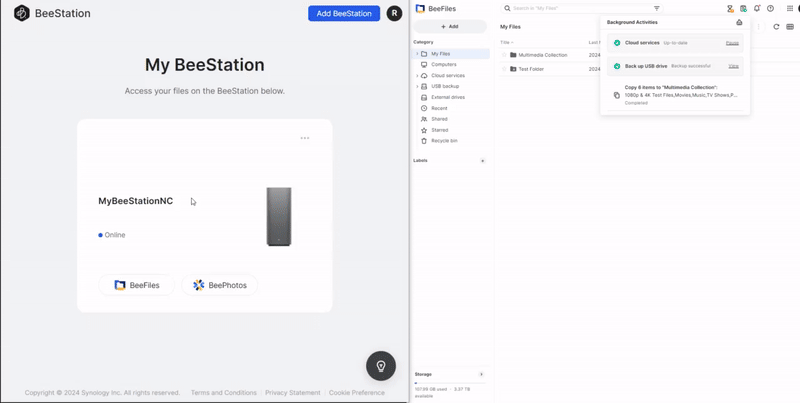
However, the BeeStation and BSM platform are more storage-only systems that provide a small toolkit for maximizing that storage for backups and general access. Additionally, likely in order not to confuse or overwhelm the user with configuration, the actual options for sharing this system are also more limited than a normal DSM NAS. The number of maximum supported users is much lower, features such as read/write permissions are absent, sophisticated native storage file system choices such as iSCSI are absent, and even the options for connecting this to another NAS system at launch are quite limited. Again, if you are just looking for your own private cloud with no bells and whistles and easy day-to-day use, this device is perfect. But it is not an alternative to Synology DSM in terms of overall scope.
Not Available Unpopulated or in Other Capacities (at Launch)
One can appreciate that Synology almost certainly has a larger launch campaign for the Synology BeeStation up its sleeve, but it was perhaps a little short-sighted to only launch a single device in a single capacity. In its 25 years of business, Synology has produced numerous scales of systems in terms of system power and storage capacity, so it is a little unfair to criticize them for not going at it with the same level of thrust when launching a whole new arm of their business. However, there is valid criticism to highlight that the system is only available in a four-terabyte capacity (likely with larger capacities to be fair), but also that there is no 0TB/Empty option. Synology solutions have always arrived unpopulated, allowing flexibility in choosing storage. No doubt, in the interest of simplicity, Synology has rolled this solution out with their own branded drives as compulsory. If you dig into the Synology download area for manual system updates, you also find that the firmware updates for the BeeStation are much larger than those found in traditional DSM despite those systems not having storage media by default. This is because BSM arrives with applications for backup and storage management pre-installed and pre-allocated to the 4TB Synology hard drive configuration, meaning the firmware is locked to the 4TB model, and more specifically, to a Synology hard drive. So, long-time Synology veterans might not be huge fans of the fact that this system is only available in a 4TB capacity and that there is no means to install alternative hard drives or get the system without one. However, realistically, they are not the target audience for this product.
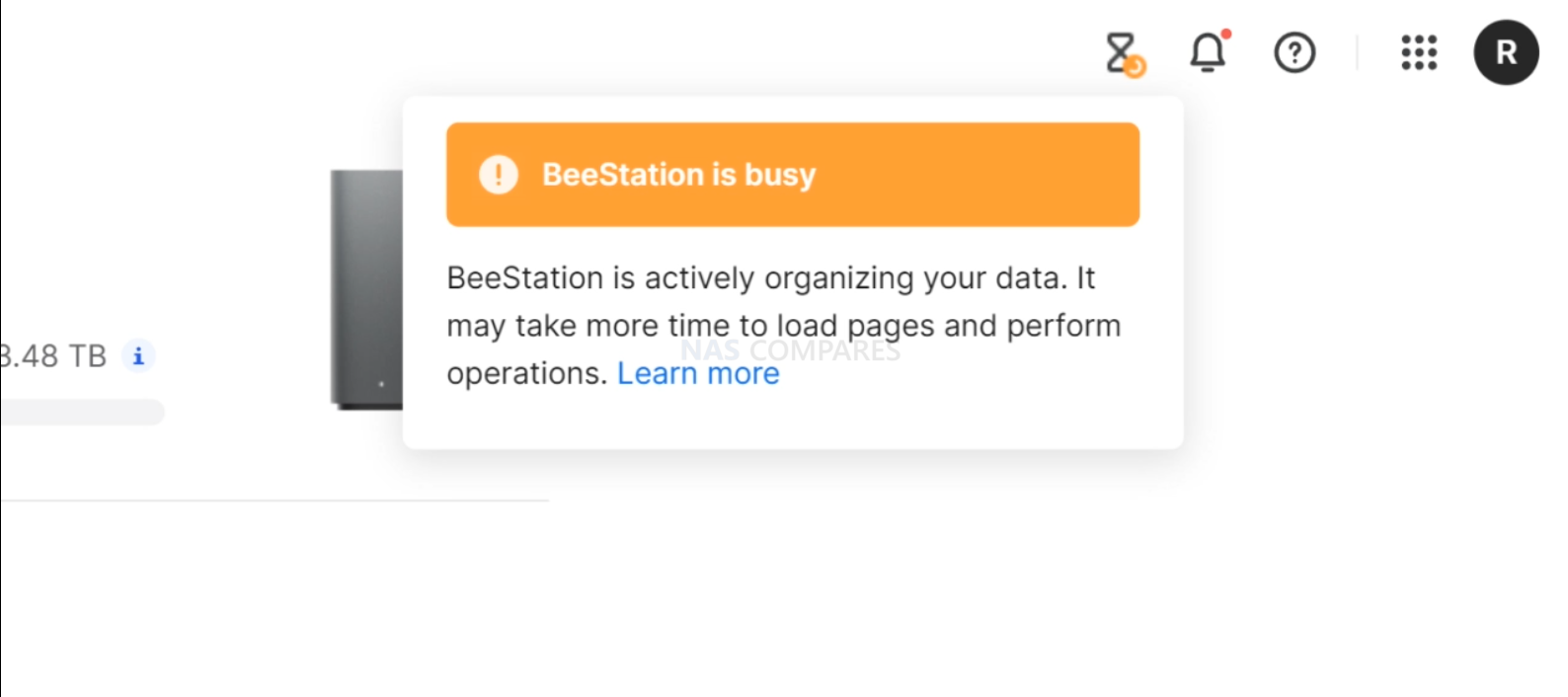
Additionally, there is no avoiding that the system OS and a single 5400RPM HDD (if it is the HAT3300 inside) definitely adds up to system slowdown during even vaguely busy periods of use. Numerous times during the testing of the device, during backups, indexing or client synchronization the poor multi-tasking of a single HDD resulted in slower responses. Synology are clearly aware of this too, as on numerous occasions the BeeStation GUI would warn me to expect responsiveness to decrease during these periods. I appreciated that the system was warning me, but nonetheless this does not excuse the overall slow response that is clearly the result of the hardware on offer here.
The Beestation is Only Available as a 1-Bay – No RAID (at Launch)
Going further on the subject of the 4TB storage, it’s also surprising to see Synology roll out this system in a single-bay configuration. If you had told me that Synology was rolling out a new low-powered alternative to the likes of the WD My Cloud, I would have bet that the first solution would be a 2-Bay/RAID 1 ready solution. However, the BeeStation only features a single 4TB hard drive, meaning the redundancy/failover/safety net of RAID is not available here. The system does feature two USB ports, allowing you to connect USB storage and set up an automated backup to those external drives, and with its gigabit network connectivity, you can backup off-site or to another system in your local area network, which are all great backup options. But the fact that the system’s core storage does not have any kind of failover in this launch product is quite disappointing for a brand that takes storage seriously, and I would much rather have seen at least a two-bay version of this product at launch. It kind of has an all-eggs-in-one-basket feel about it that, if you do not have up-to-the-second synchronized backups off-site, could lead to hot data being lost very easily.
No App Centre = No Popular 1st/3rd Party Apps
Once again, this is a criticism that stems from more experienced Synology DSM NAS users, and arguably one that won’t arise from Synology’s new target audience for this product, but the lack of any kind of app center for tailored add-ons on BSM and the BeeStation is really disappointing. Synology has a phenomenal catalog of applications and services in its app center that allow users to curate, categorize, and access files in very tailored ways. You’re missing out on a video application for streaming your media with scraped metadata and transcoding, an audio application to share your albums and curate your playlists, and support for third-party multimedia tools for seamless access to third-party clients – these are just the multimedia options you’re missing out on in the BeeStation due to its lack of an app center or any kind of app store, as you would find in DSM.
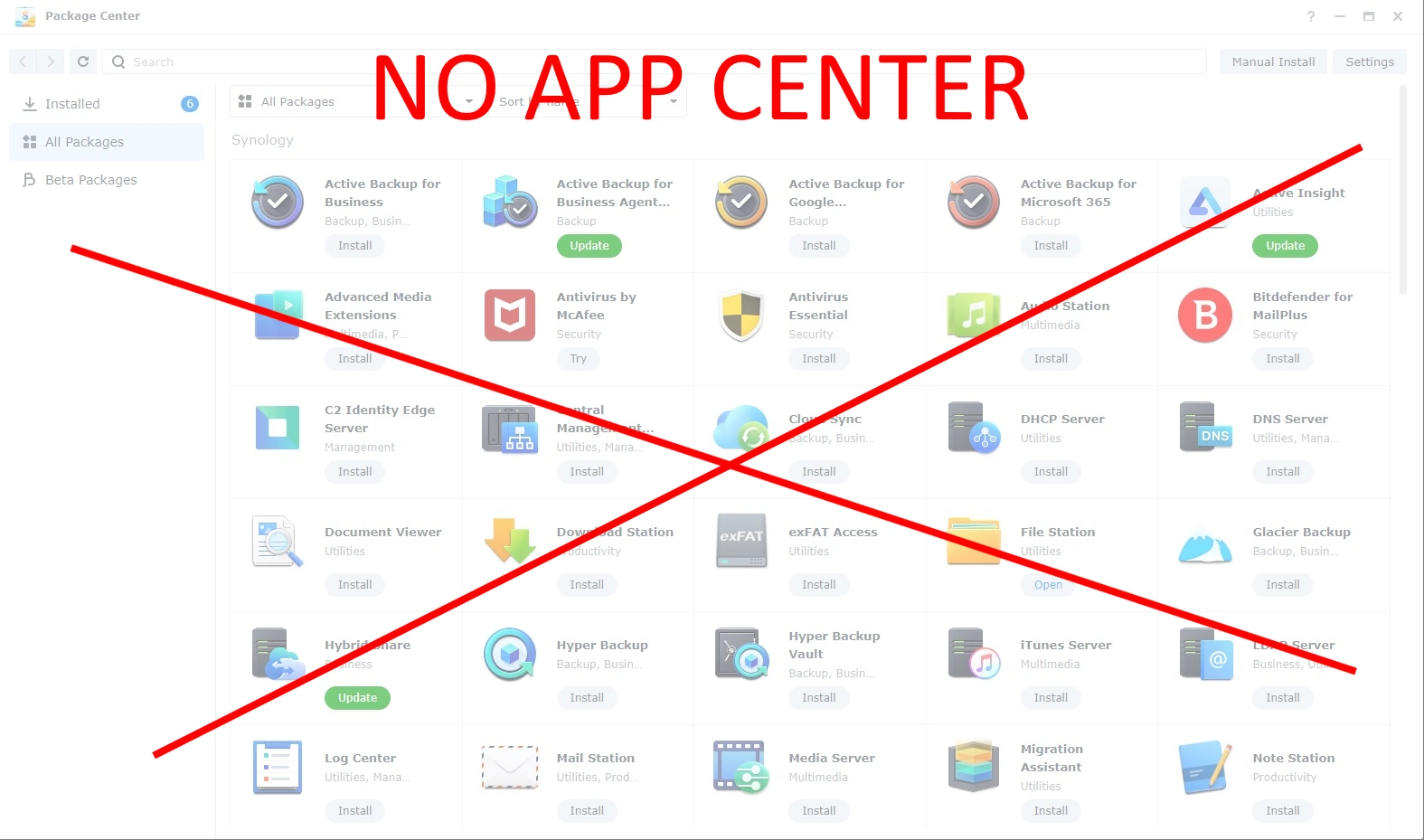
Digging a little deeper, you suddenly realize the full range of applications and services Synology has offered for years that are just not available here to be downloaded conveniently at your whim from an app center. There is no denying that Synology is going to improve BSM over time and likely roll a number of these key first-party applications into the base BSM package. But if you are someone used to a Synology NAS and one of the reasons you chose it was because of the more application-rich experience compared to WD NAS OS, QNAP’s QTS, or even the Seagate NAS OS (which might well be EOL now), the Synology BeeStation is not going to be for you.
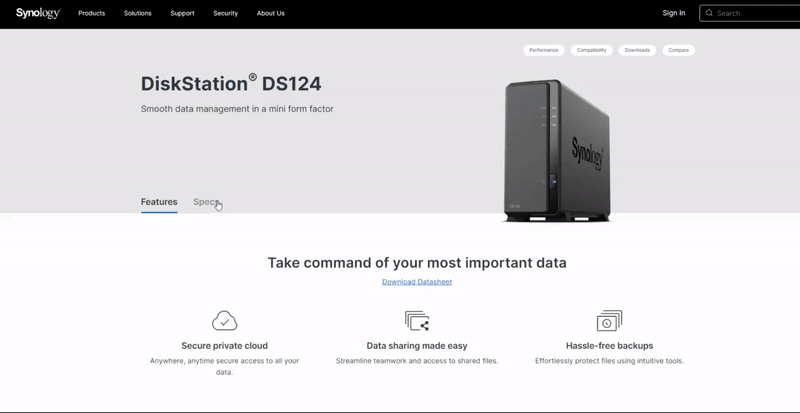
Requires a Synology Account to Set Up, and LAN is OFF by Default
This is a relatively minor point, but in some circumstances, it’s incredibly crucial for some. When setting up the Synology BeeStation for the first time, it’s important to note that you are not setting it up over the local area network in the majority of cases. Setting up the BeeStation requires the system to be plugged into an internet-accessible network, and then setup is conducted via an online portal using your serial number. A Synology account needs to be created during its setup, and by default, the system is accessible via the internet, through Synology’s servers. To Synology’s credit, it still manages to be one of the most secure NAS platforms out there, with data transmission encrypted by default via the remote access service, and features such as SSH are not enabled by default. But there are users who prefer using their NAS system exclusively offline, limiting access to only the local area network, and manually injecting updates from their client system. I was surprised during my first experimentation with the device to find that local area network (LAN) access is disabled by default.
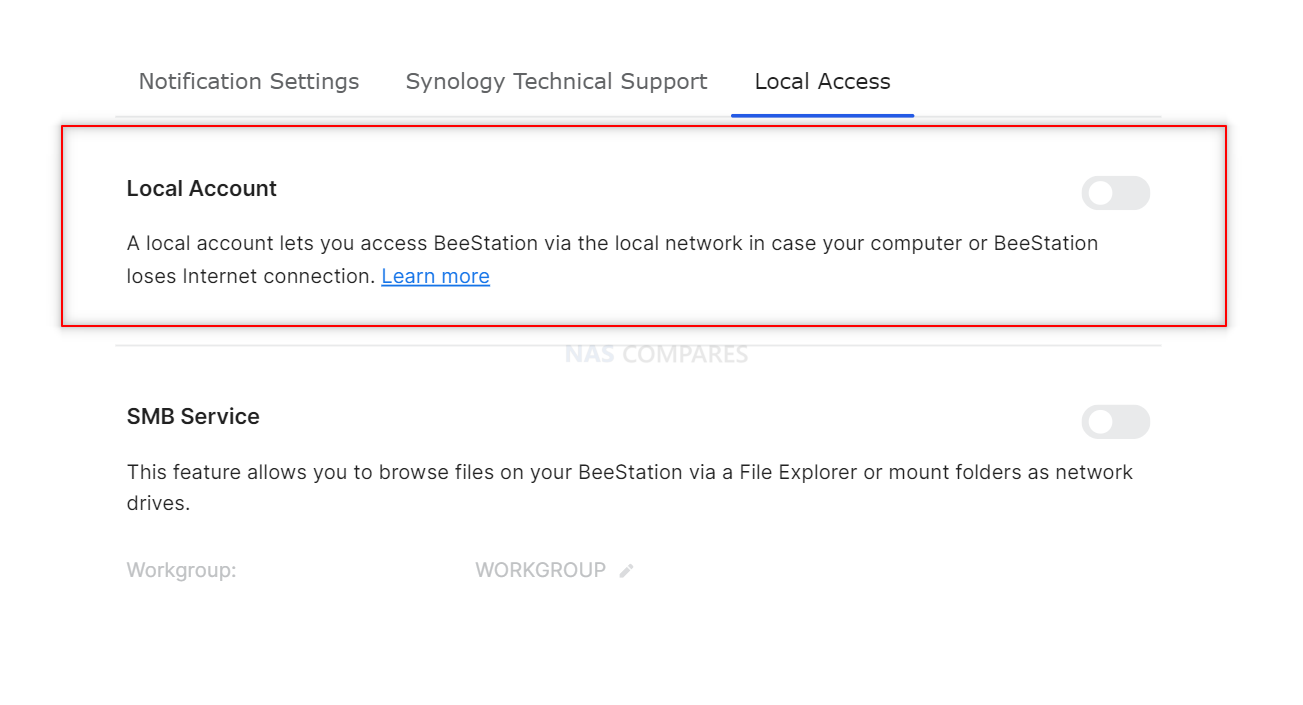
Again, I understand that Synology wants to remove any tricky customization or configuration choices for users who might want a simplified and streamlined cloud experience. However, local area network access I would consider to be a base-level requirement. In the event that you lose access to the system via the internet, or if you lose access to the system despite being in the same room as it, the fact that LAN access is disabled by default may prove extraordinarily tricky. A great example would be the WD security incident I mentioned earlier. One reason users were particularly impacted by WD turning off the My Cloud servers was that WD My Cloud NAS devices have LAN disabled by default. This meant those users could not access the system during that internet outage unless they used a complicated client tool method to enable it. Although this method seemed relatively straightforward to the more tech-savvy, it proved overwhelming and complicated to the less storage and network-savvy audience these products are targeted towards. You are likely able to use Synology Assistant to log into the system via local area network access and reconfigure this option via a client application, but even then, it’s by no means a streamlined process. Nevertheless, I do think disabling LAN access on the system by default is perhaps a little shortsighted and overzealous.
Synology BeeStation Personal Cloud – The Final Verdict
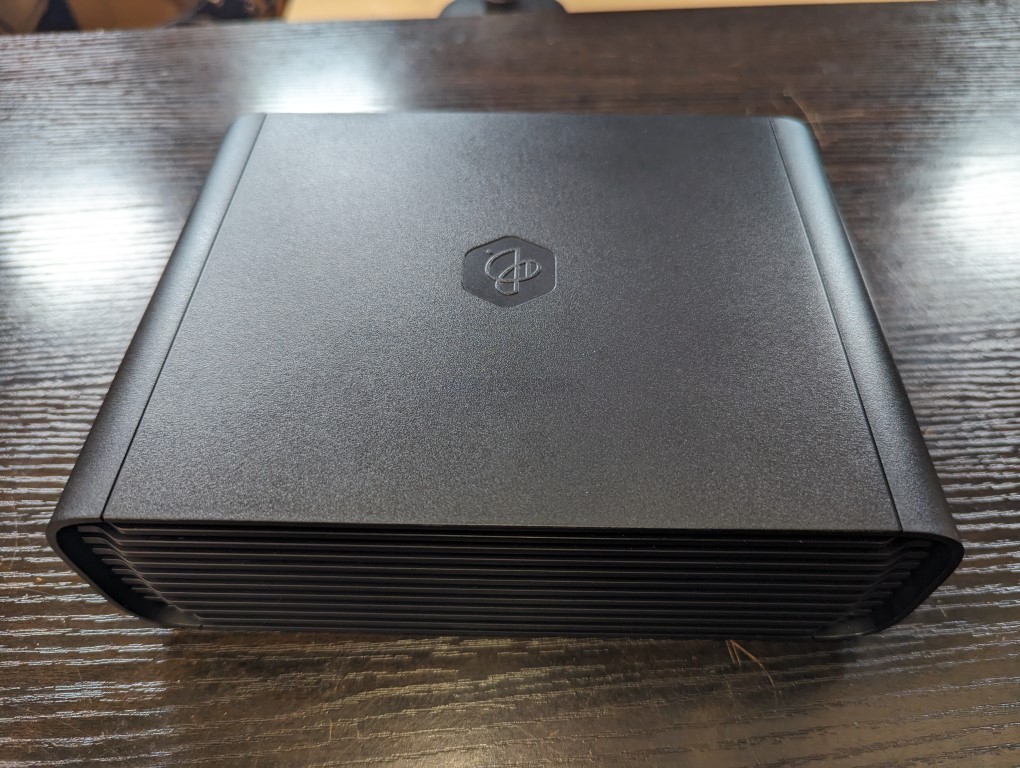
The Synology BeeStation marks a significant shift in Synology’s product line, targeting a new segment of users with its simplified yet functional design. This device stands out as an excellent middle ground between ease of use and a comprehensive private cloud system, providing secure and seamless access to stored data. While it is incredibly user-friendly and easy to set up, the lack of LAN access by default and its single-bay, 4TB-only configuration at launch might limit its appeal to more tech-savvy users or those seeking greater flexibility and expandability. The BeeStation’s unique selling point is its simplicity, making it a compelling choice for those new to NAS systems or for users who prioritize ease of use over extensive customization options. However, its simplicity also means that it lacks the extensive app support found in Synology’s DSM platform, potentially disappointing users accustomed to the richer application ecosystem offered by Synology’s more advanced models.
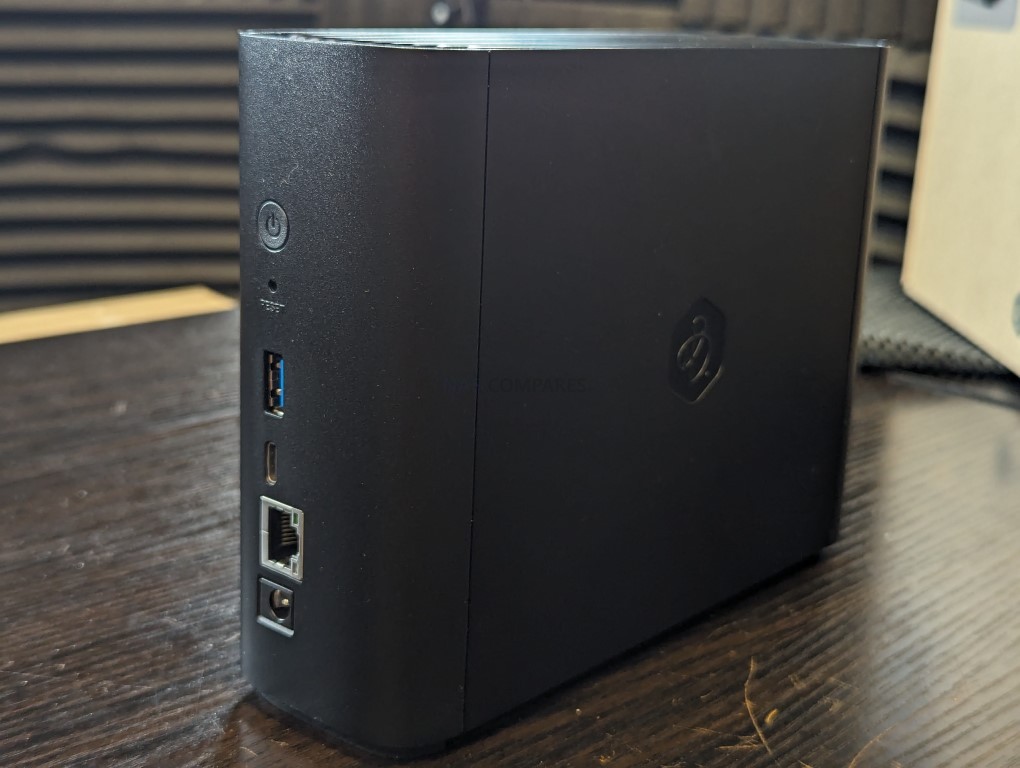
For users concerned about security, the BeeStation still upholds Synology’s reputation for secure data handling, with encrypted data transmission as a standard feature. However, experienced users who prefer a more hands-on approach to their NAS setup might find the BeeStation’s lack of advanced configuration options and its reliance on internet access for setup somewhat restrictive. In terms of market positioning, the BeeStation fills a gap left by other brands like WD and Seagate in offering ‘Easy NAS’ systems. Its competitive pricing, particularly considering the included 4TB of storage, makes it an attractive option for users seeking a private cloud solution without the recurring costs associated with third-party cloud services. Despite these potential drawbacks, the BeeStation is a solid entry-level NAS solution, especially for those seeking a personal cloud with minimal setup and maintenance. It may not be as feature-rich as Synology’s DSM-based NAS devices, but for its intended audience, the BeeStation provides a well-balanced combination of functionality, ease of use, and affordability. Synology’s move to cater to a broader, less technically inclined audience with the BeeStation demonstrates their understanding of market trends and user needs, offering a solution that balances simplicity with the reliability and quality Synology is known for.
In the end, the Synology BeeStation is an ideal choice for users seeking a straightforward, reliable, and cost-effective personal cloud solution. It represents Synology’s commitment to diversifying their product range, catering to the evolving needs of different user segments. While it may not suit everyone, especially those looking for advanced features and customization, it excels in its role as a user-friendly, secure, and affordable entry-level NAS device.
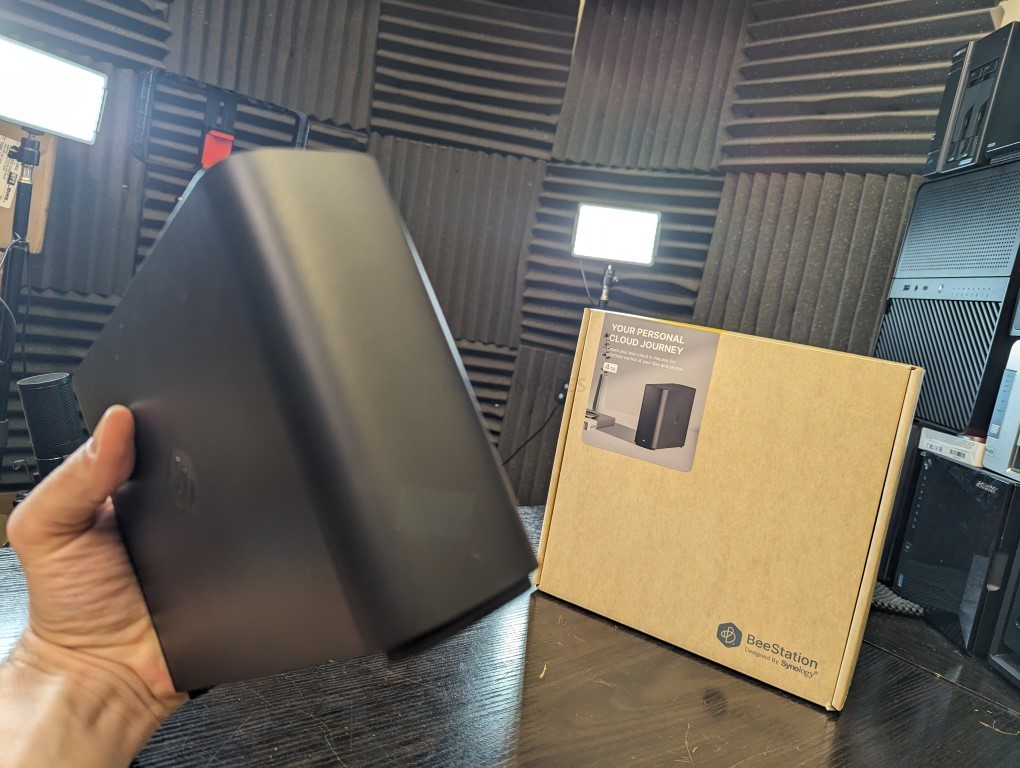 |
|
| Synology Beestation 4TB PROS | Synology Beestation 4TB CONS |
| User-friendly setup, ideal for beginners or those seeking a simple cloud solution.
Secure data handling with encrypted data transmission. Comes with 4TB of storage included, offering good value. Compact and lightweight design, enhancing portability. Quiet operation, suitable for home or office environments. Integrates seamlessly with popular cloud services like Google Drive and OneDrive. Affordable pricing at $199, a cost-effective alternative to third-party cloud services. Supports remote access, allowing data management from anywhere and across client devices/OS’. Synology’s reputation for quality and reliability is still clear on this smaller scale. |
Lacks the extensive app support and customization found in Synology’s DSM platform.
Only available in a single-bay, 4TB configuration at launch, limiting expandability. LAN access is disabled by default, which may not suit all users. Designed for a specific user base, may not meet the needs of more advanced users. |
Need More Help Choosing the right NAS?
Choosing the right data storage solution for your needs can be very intimidating and it’s never too late to ask for help. With options ranging from NAS to DAS, Thunderbolt to SAS and connecting everything up so you can access all your lovely data at the touch of a button can be a lot simpler than you think. If you want some tips, guidance or help with everything from compatibility to suitability of a solution for you, why not drop me a message below and I will get back to you as soon as possible with what you should go for, its suitability and the best place to get it. This service is designed without profit in mind and in order to help you with your data storage needs, so I will try to answer your questions as soon as possible.
📧 SUBSCRIBE TO OUR NEWSLETTER 🔔
🔒 Join Inner Circle
Get an alert every time something gets added to this specific article!
This description contains links to Amazon. These links will take you to some of the products mentioned in today's content. As an Amazon Associate, I earn from qualifying purchases. Visit the NASCompares Deal Finder to find the best place to buy this device in your region, based on Service, Support and Reputation - Just Search for your NAS Drive in the Box Below
Need Advice on Data Storage from an Expert?
Finally, for free advice about your setup, just leave a message in the comments below here at NASCompares.com and we will get back to you. Need Help?
Where possible (and where appropriate) please provide as much information about your requirements, as then I can arrange the best answer and solution to your needs. Do not worry about your e-mail address being required, it will NOT be used in a mailing list and will NOT be used in any way other than to respond to your enquiry.
Need Help?
Where possible (and where appropriate) please provide as much information about your requirements, as then I can arrange the best answer and solution to your needs. Do not worry about your e-mail address being required, it will NOT be used in a mailing list and will NOT be used in any way other than to respond to your enquiry.

|
 |
Do MORE with Your M.2 Slots - GREAT M.2 Adapters!
5 Top Tips for Content Creators Buying a NAS
Terramaster F4 SSD NAS - Should You Buy? (Short Review)
Minisforum N5 Pro NAS Review - Did Minisforum just WIN at NAS?
What Can You ACTUALLY DO with HDMI on Your NAS?
Best NAS for under $499
Access content via Patreon or KO-FI







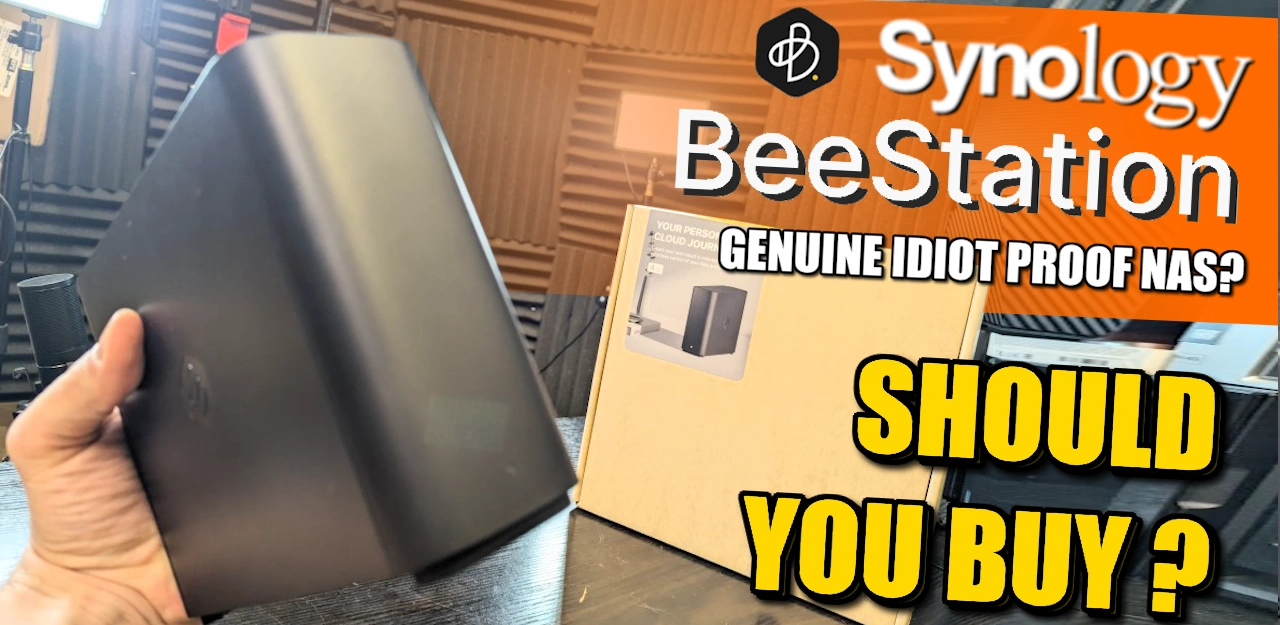
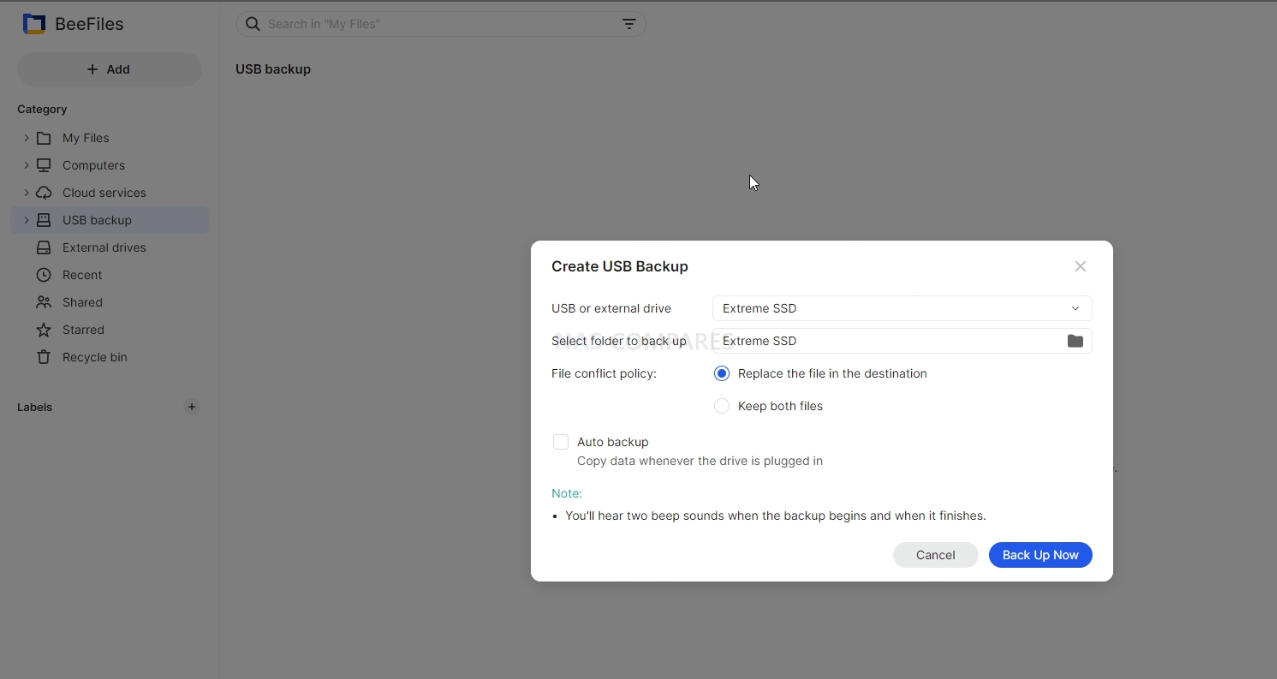
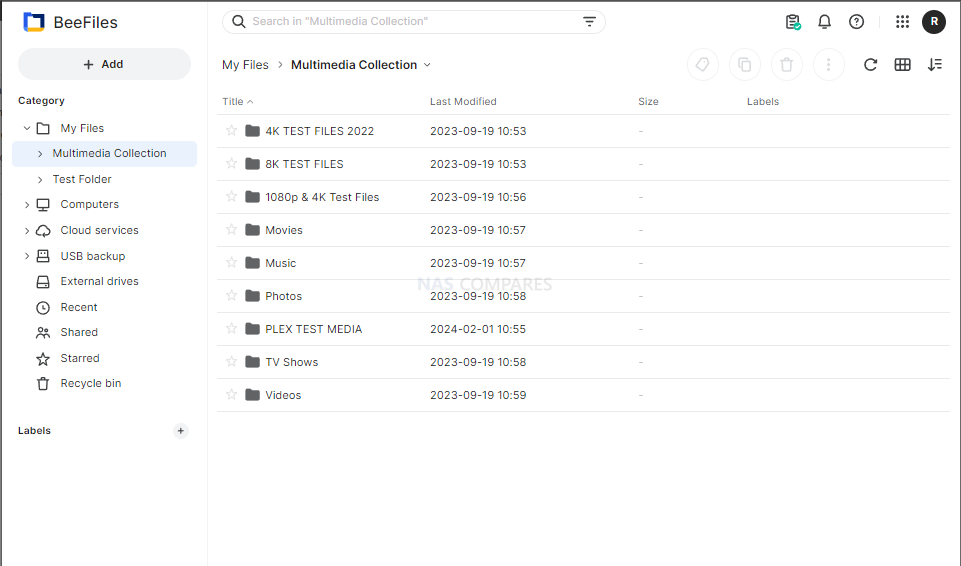
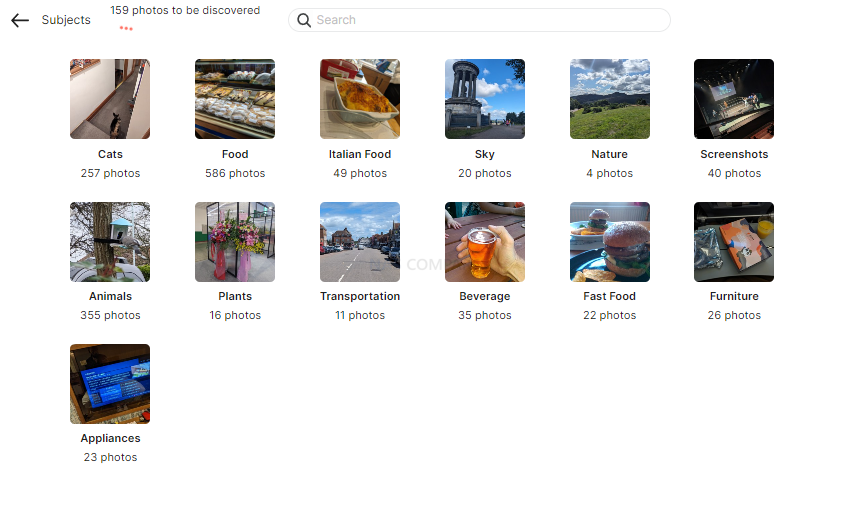
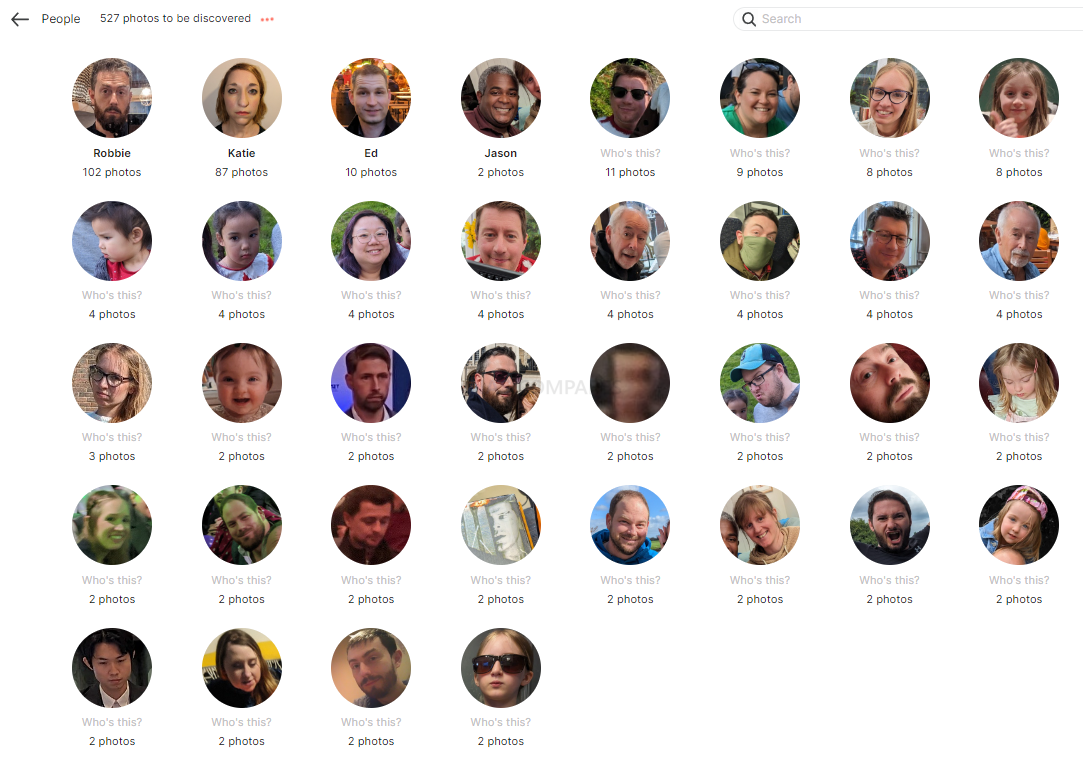
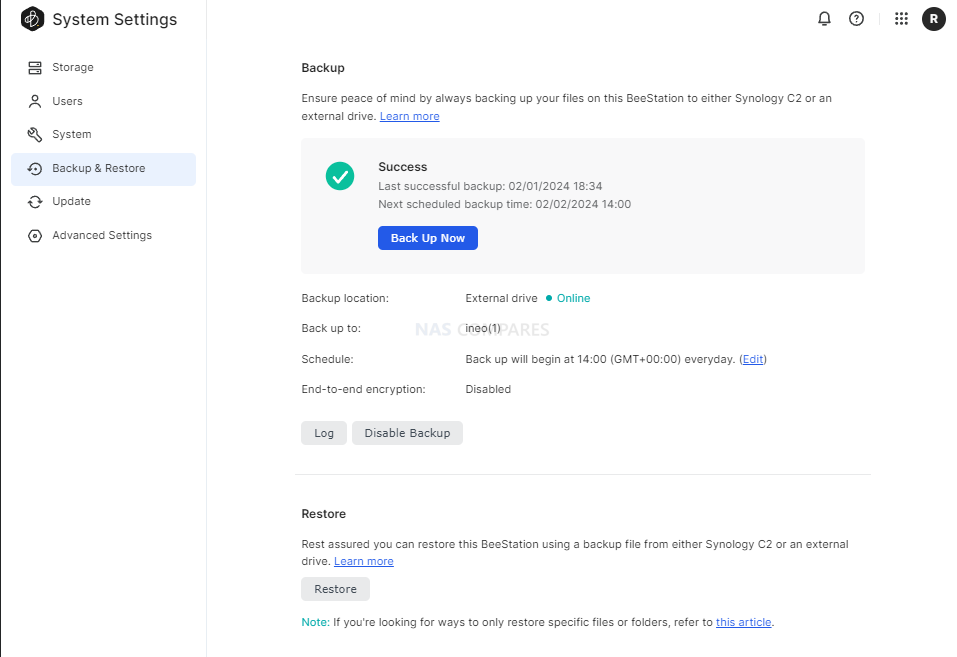
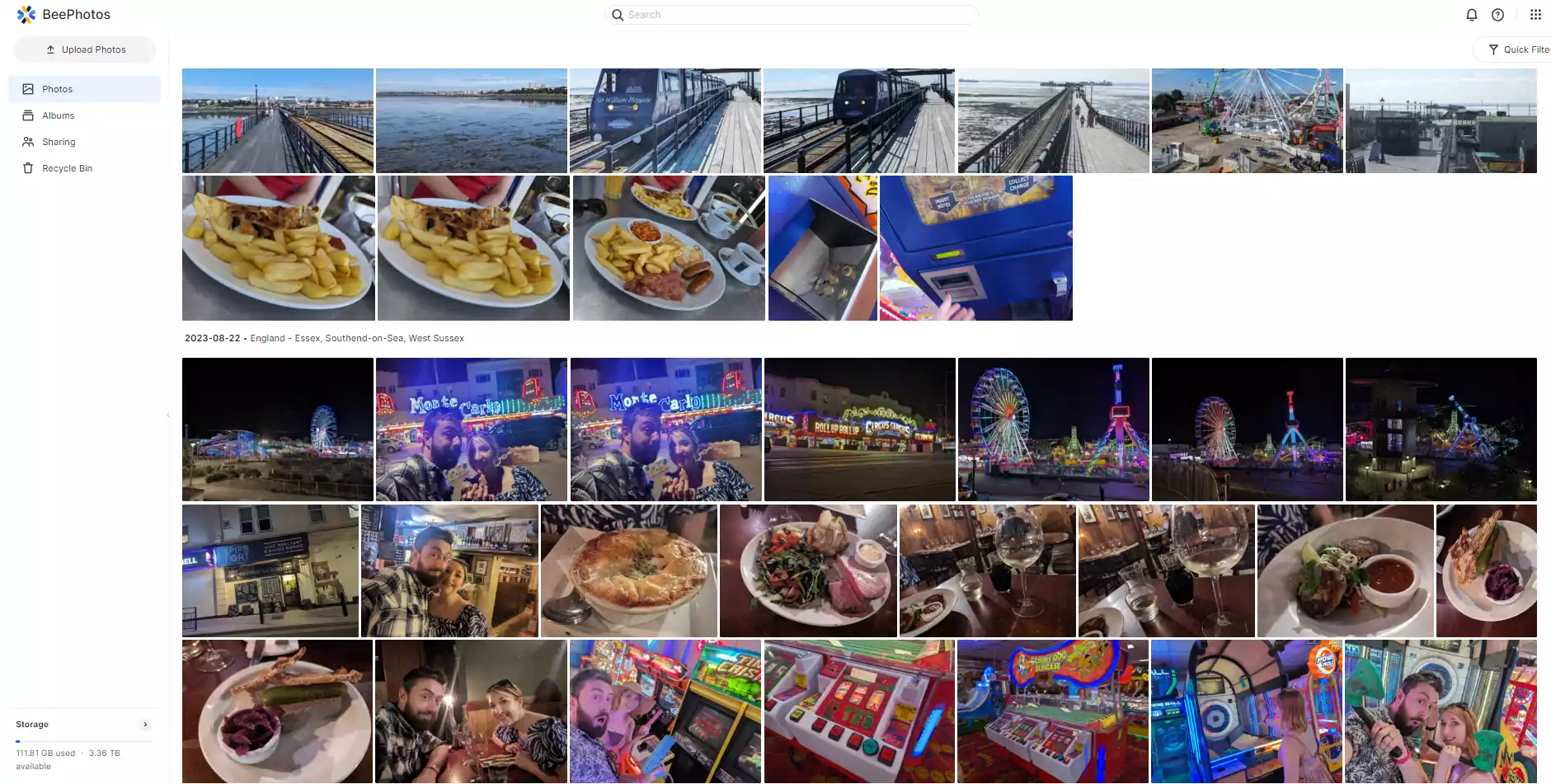
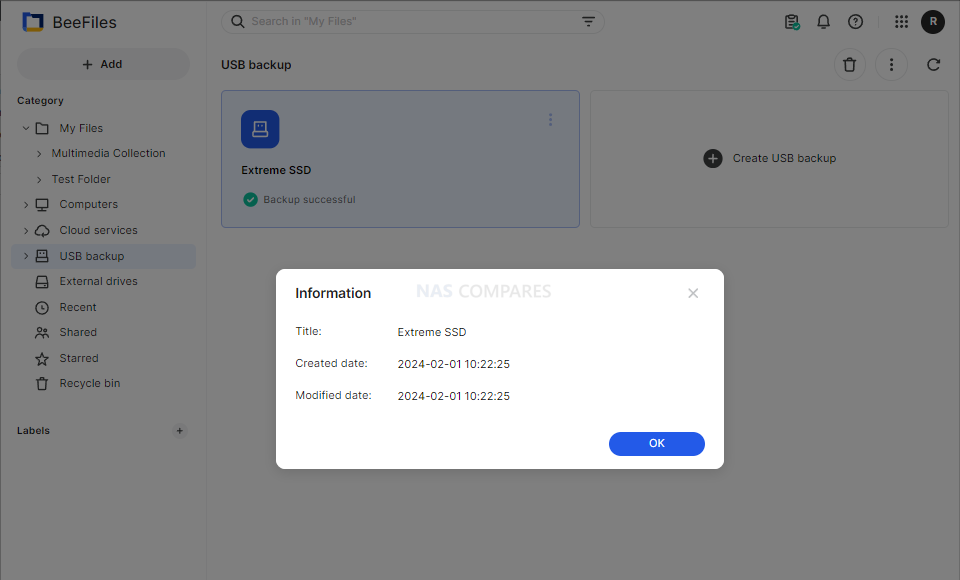
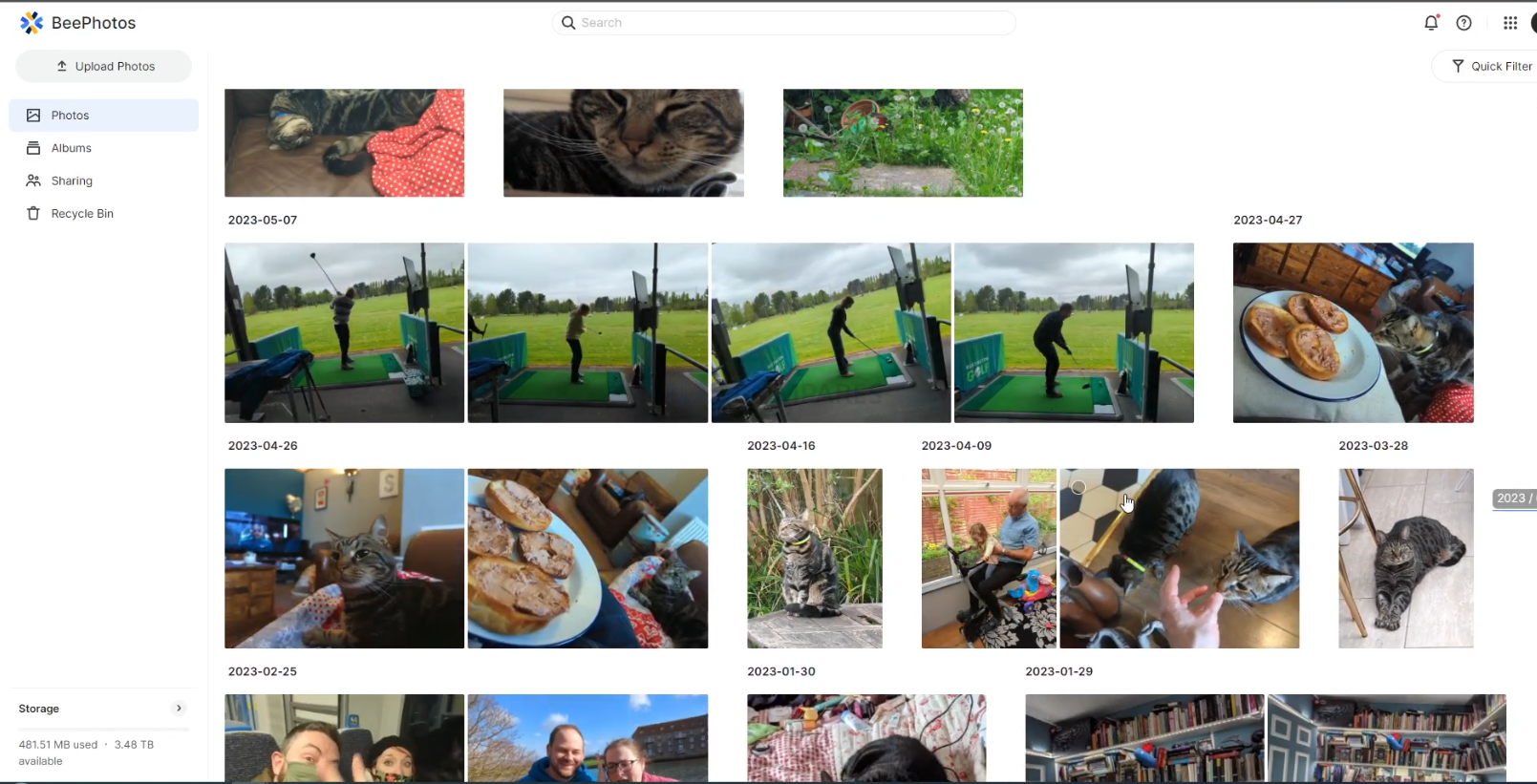
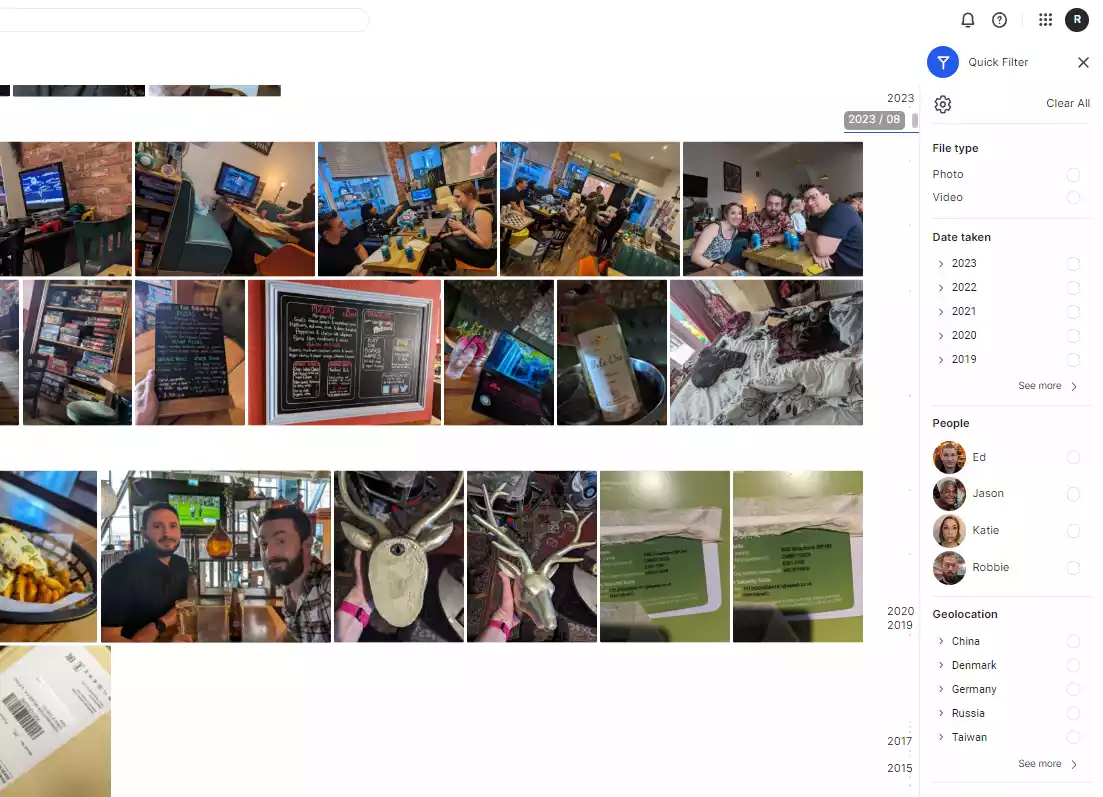
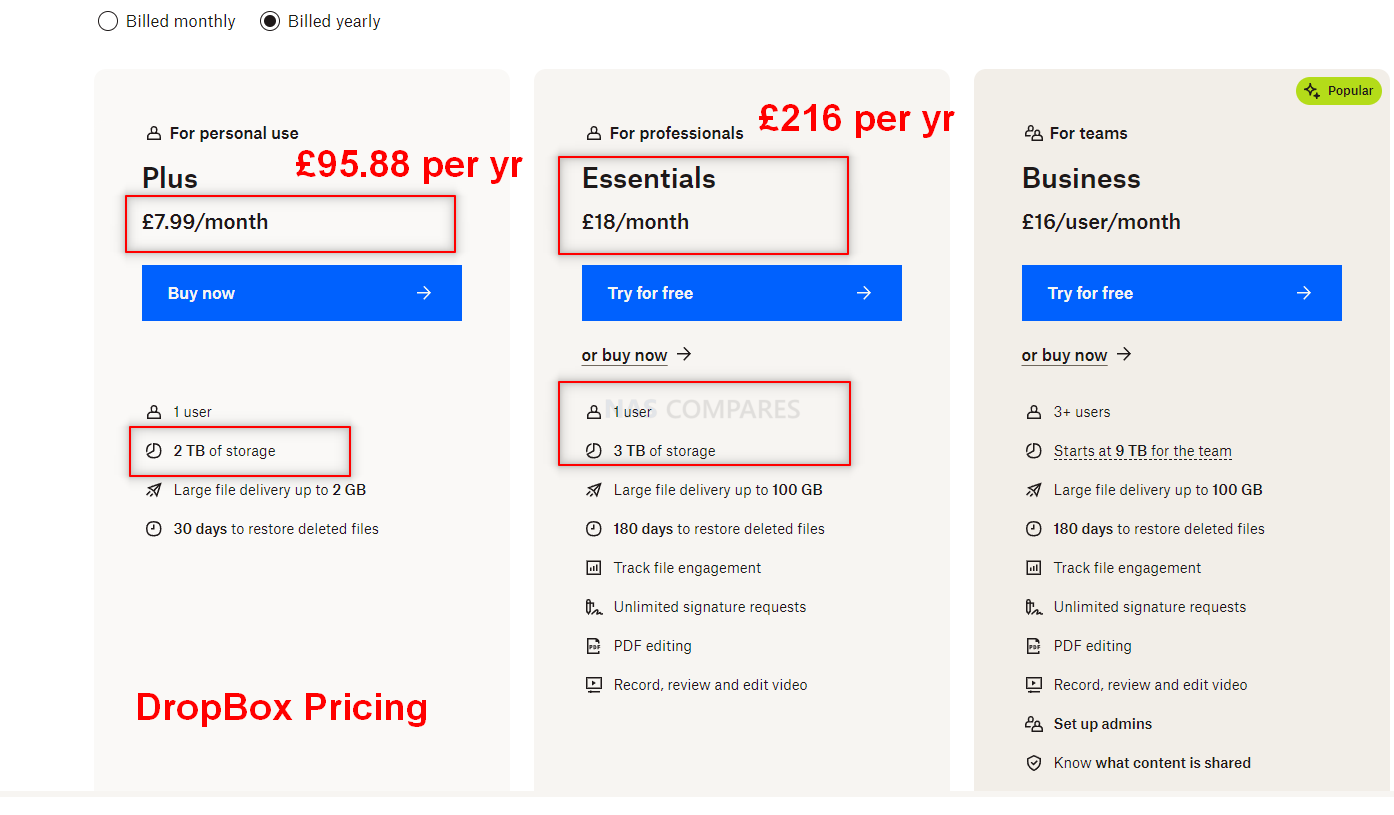
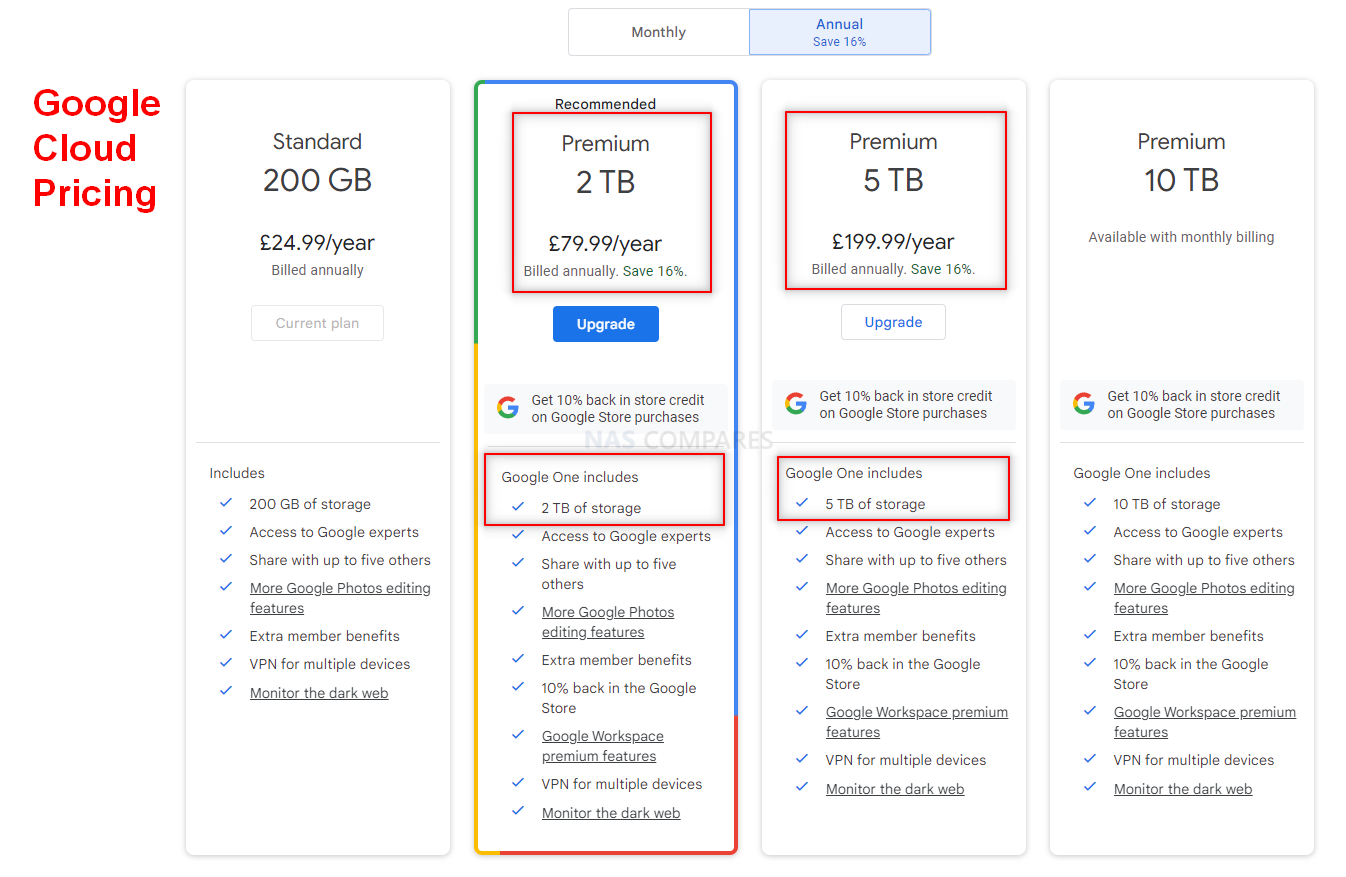
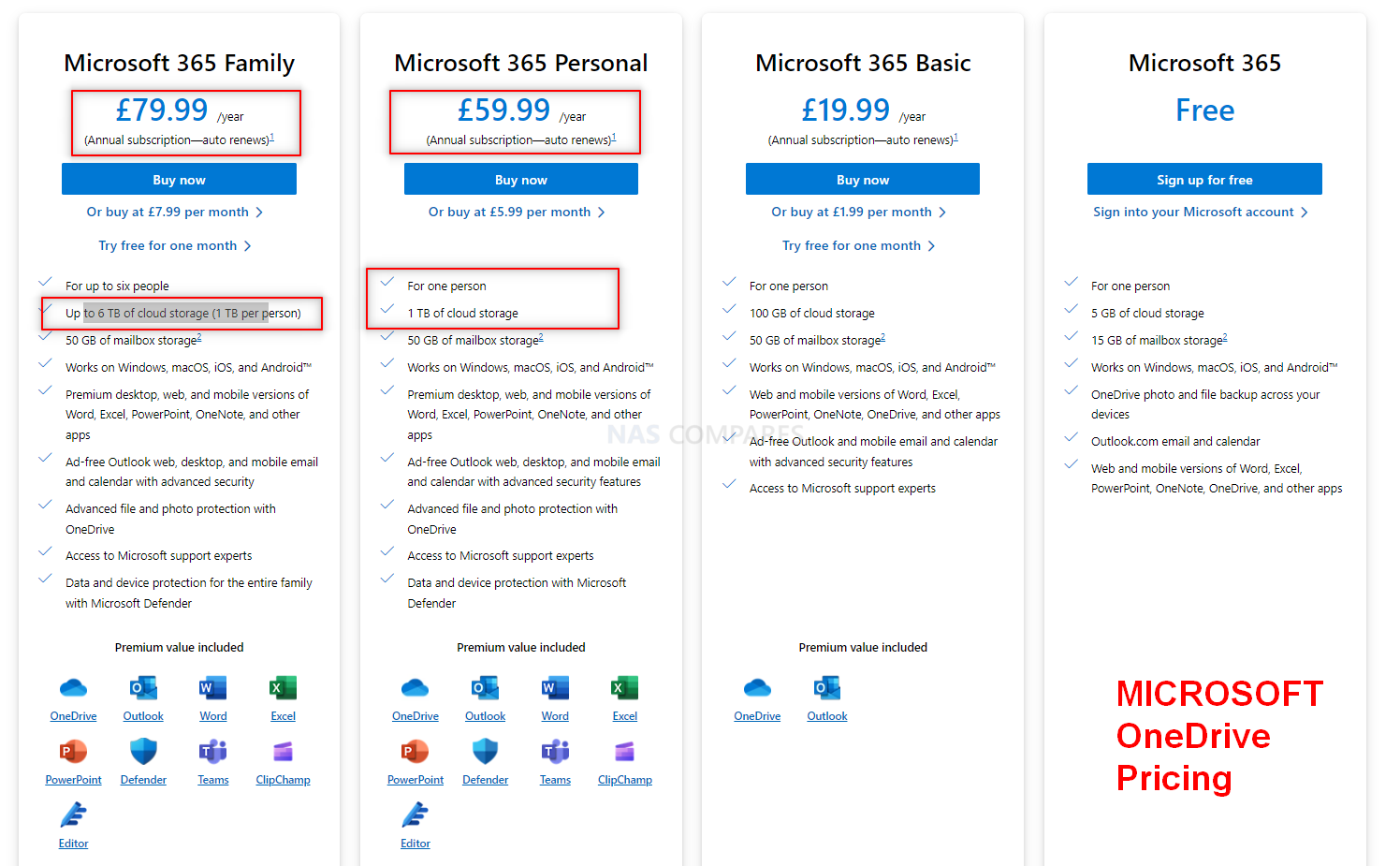
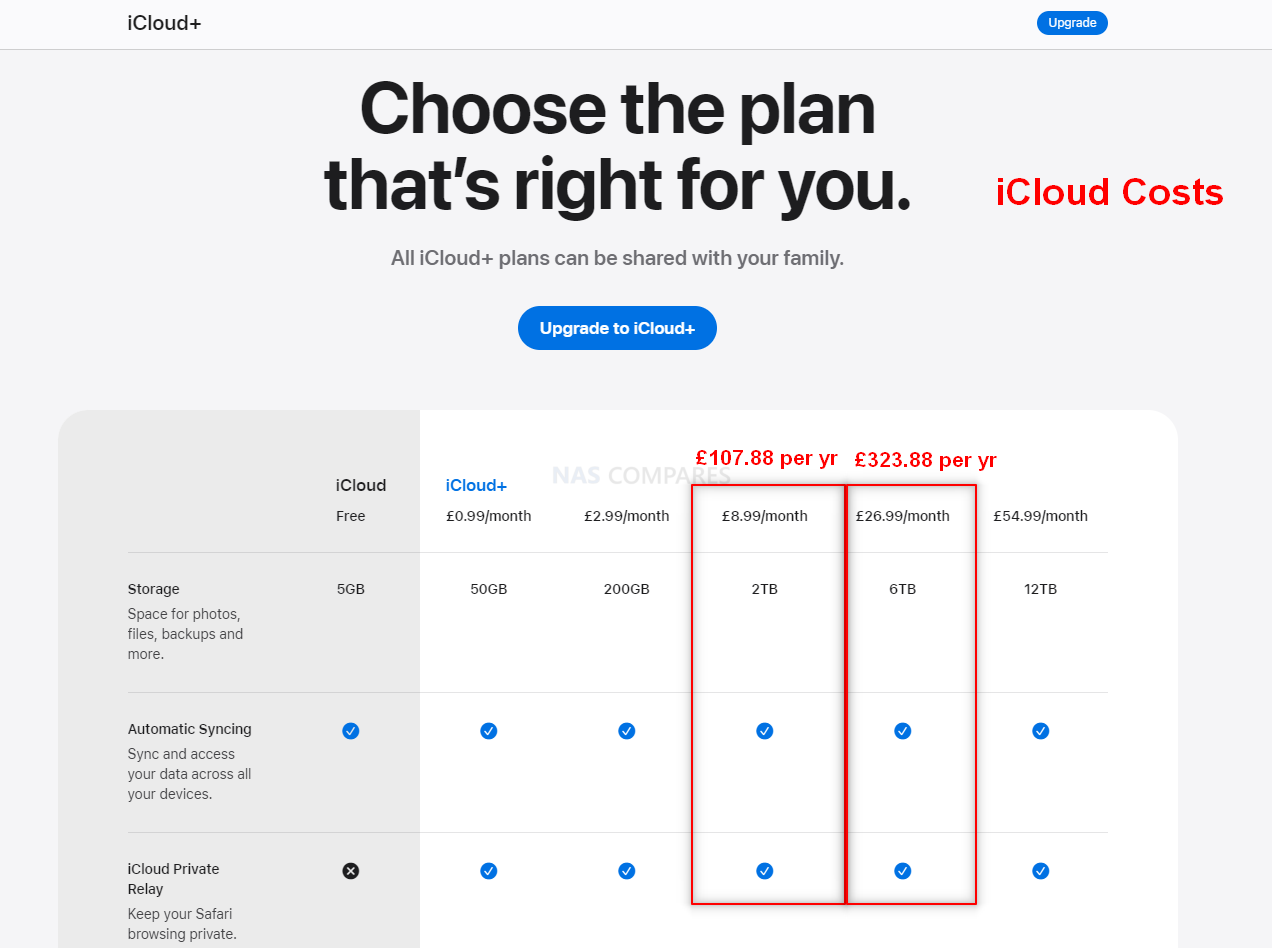
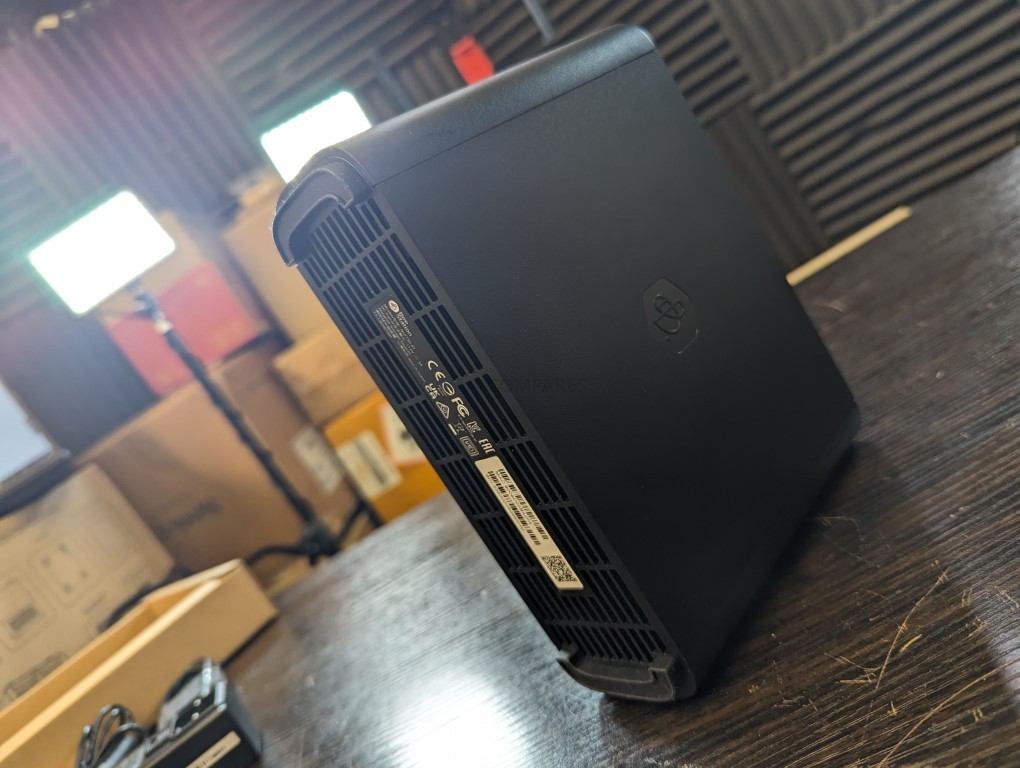
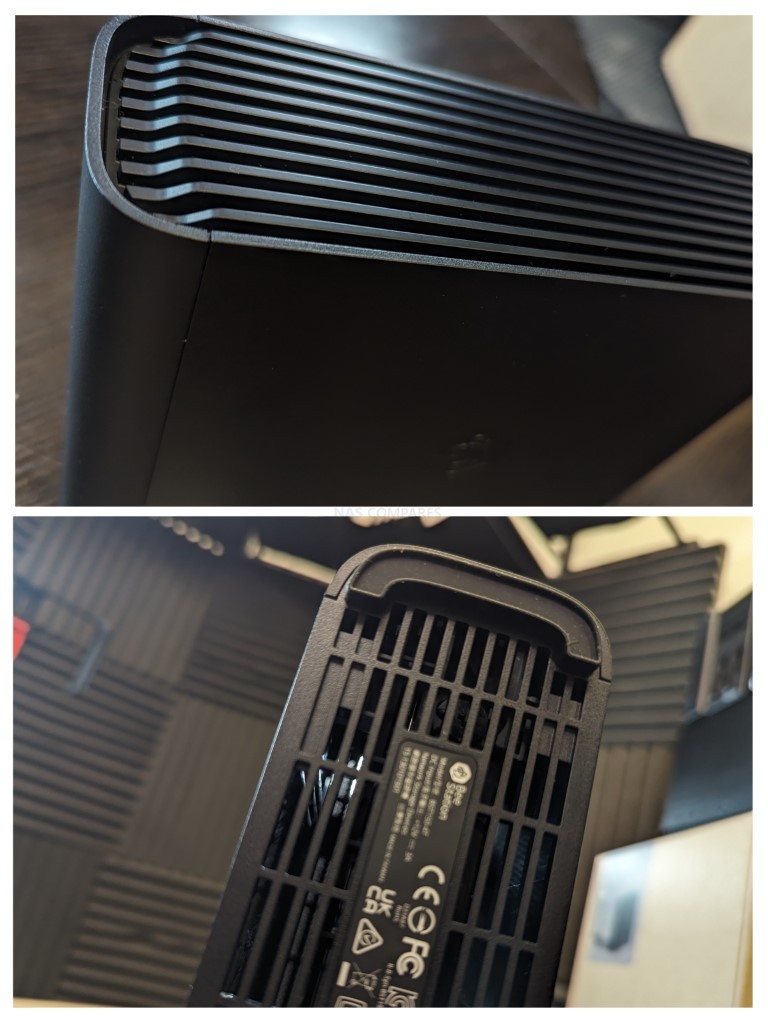
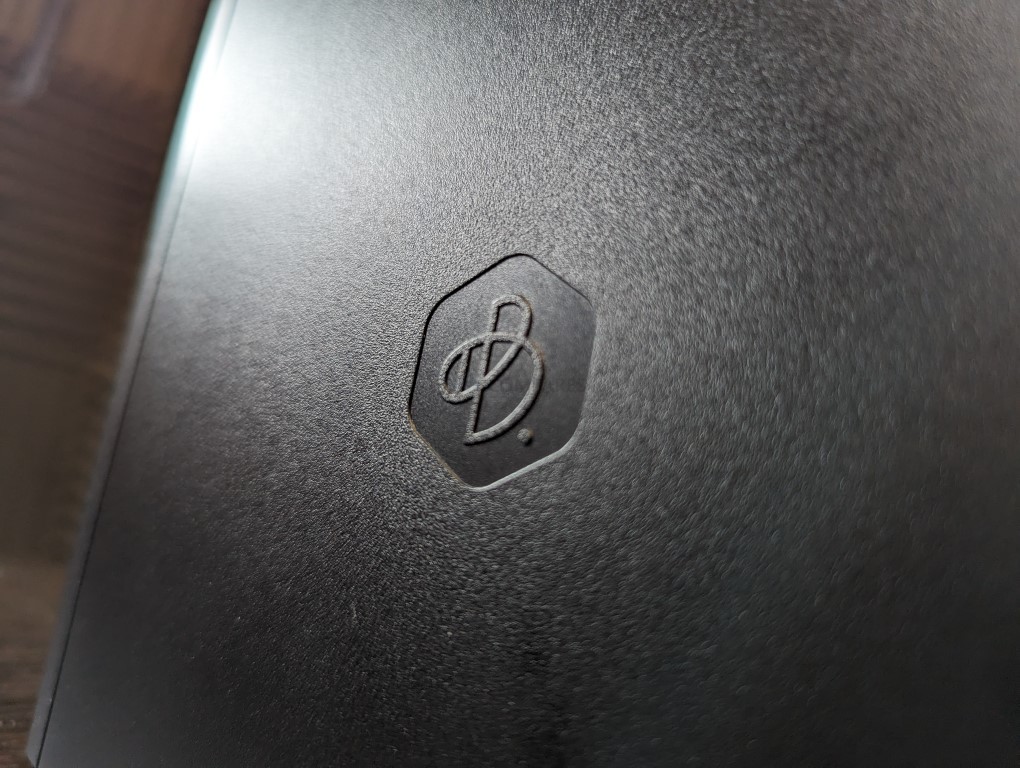

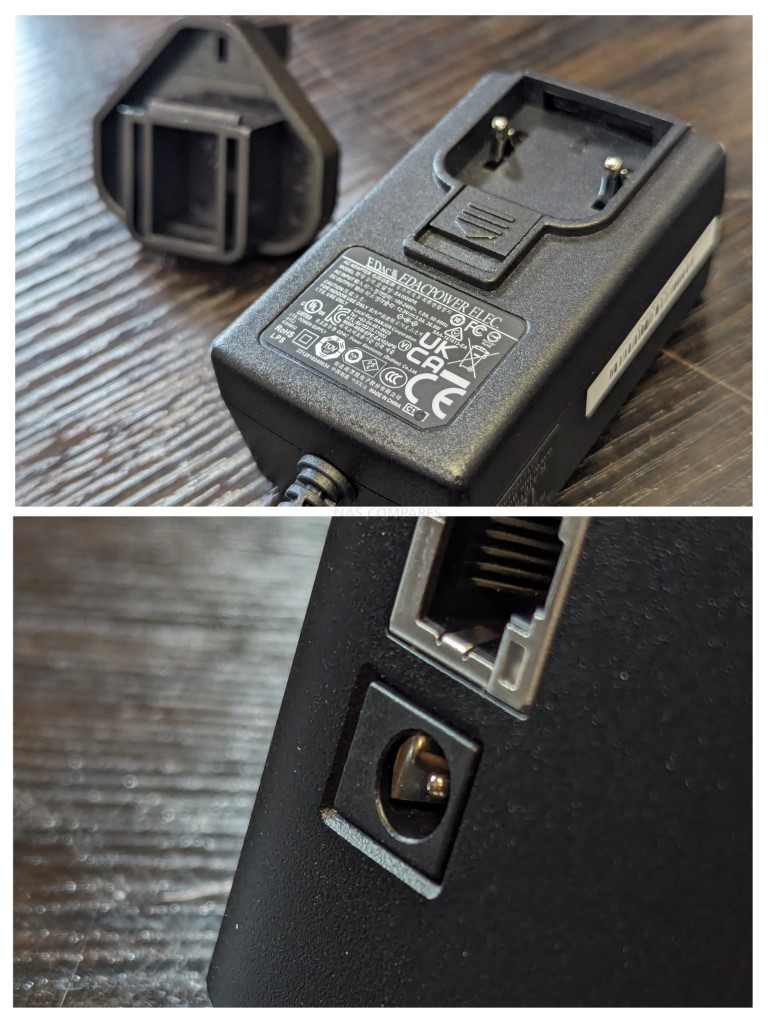
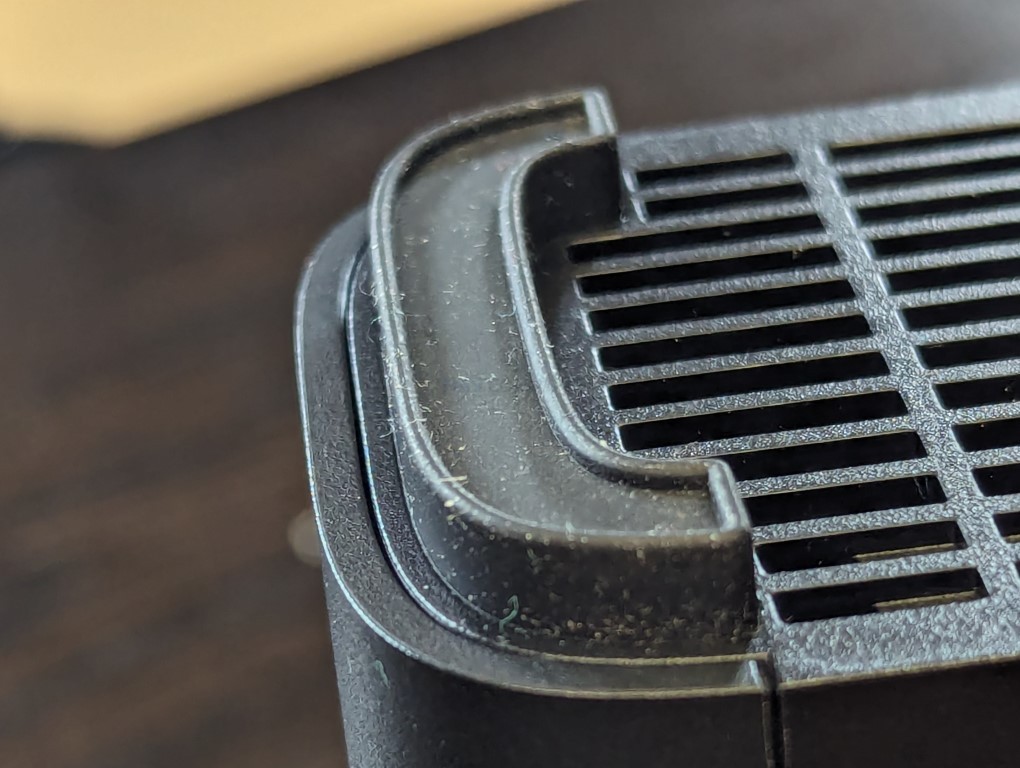
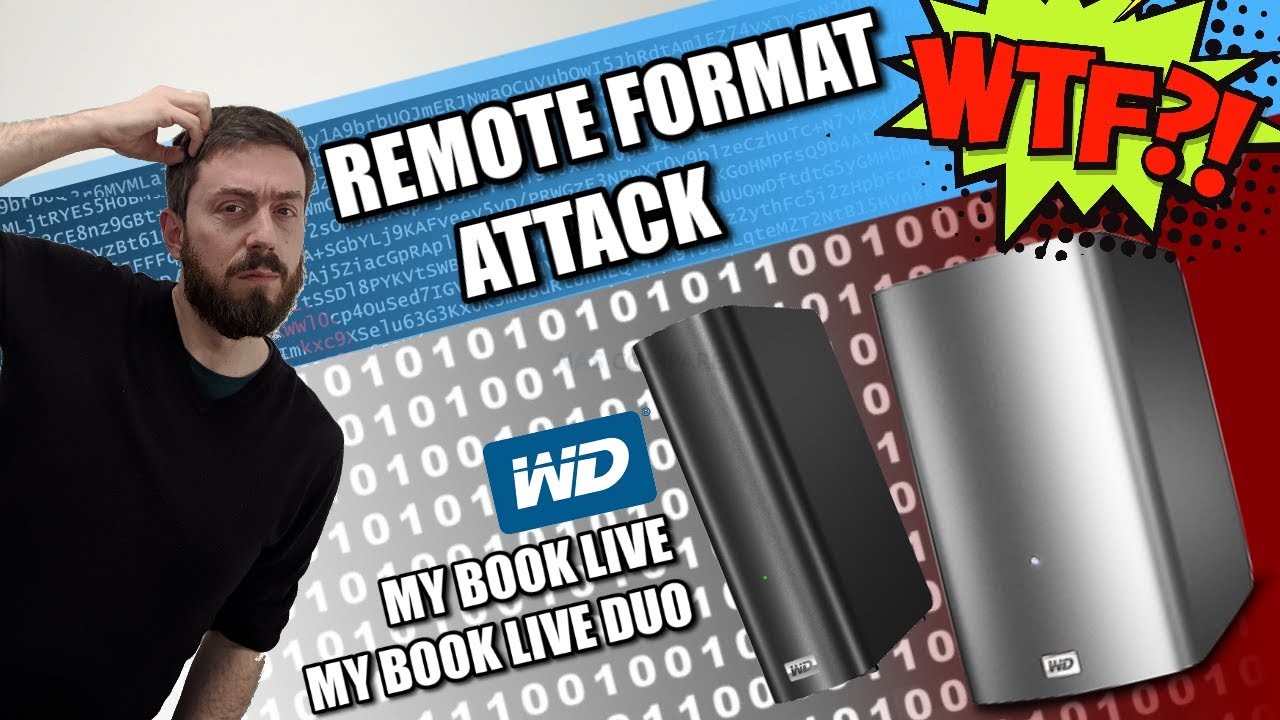
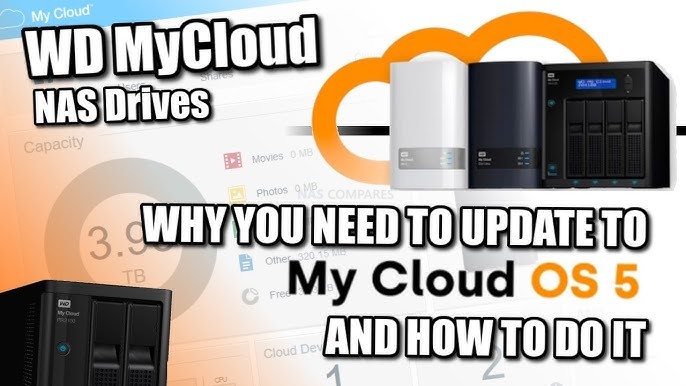
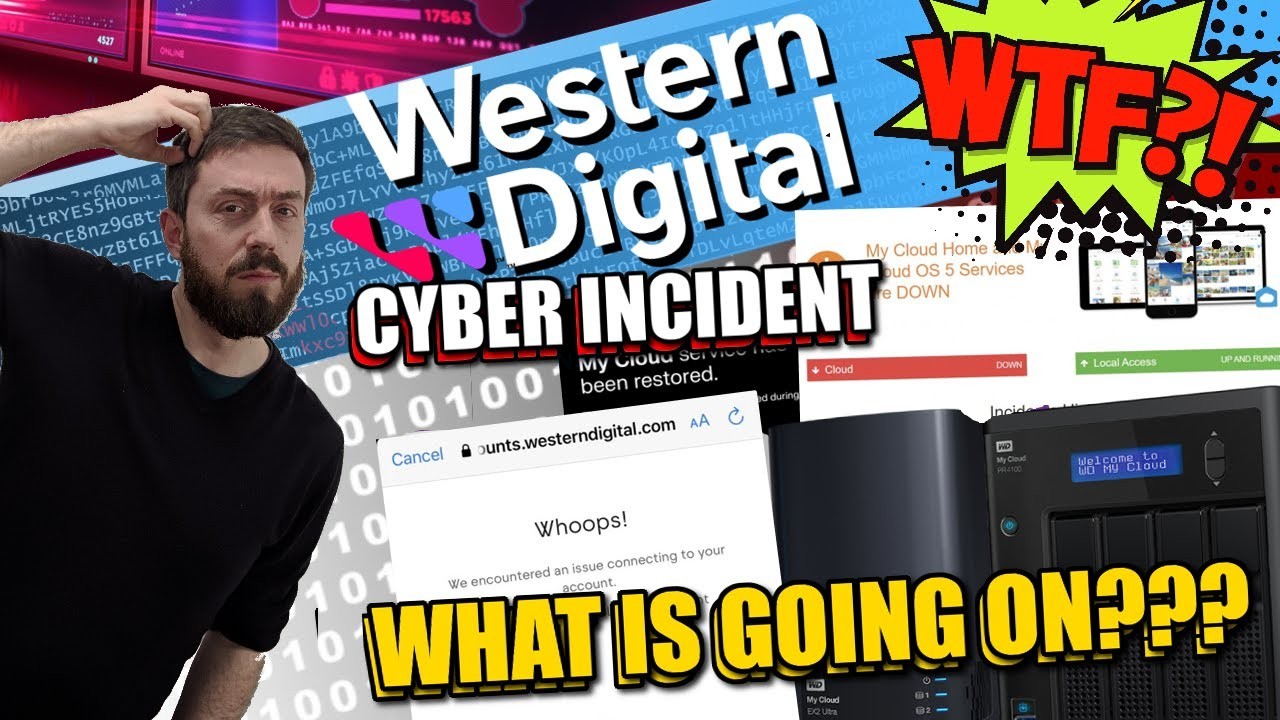




Just switching from NETGEAR to Synology. I noticed that not every file was copied from my backup USB disk to my new NAS (DS923+). For some reason Hidden Files where skipped. WHY SYNOLOGY??? How do I configure “USB Copy” or NAS-IP:500 to show and copy hidden files? This is to ensure every file from my NAS is backed up and if needed restored? Yes: NO issue for Total Commander and that is how i noticed it. Great Tool. But i do want to use the backup functionality. With NETGEAR it is also NO problem.
REPLY ON YOUTUBE
Does BeeStation operate without an Internet connection?
You can enable local access after the initial setup. In situations where your Internet service provider experiences an outage, you can still sign into BeeStation using its private IP address through a web browser or via the SMB protocol.
Currently, signing into the desktop or mobile apps without an Internet connection is not supported.
REPLY ON YOUTUBE
It’s been 5 months since I got one, The BeeStation, in my opinion, is a waste of time. Synology should have made a install video. Took several days and I got it finally working once. later, when do a status check, it still showed it was working, but in fact it was not updating the drive. I finally open a service ticket and it took over 3 weeks for an email response. After each ‘try this’ response, it was over a week for any reply. I gave up after 2 months. It probably could have been fixed with a 10-20min phone call.
REPLY ON YOUTUBE
At the approximately $200 price point, it seems to me the appropriate comparison is external SSD drives and compared to an external drive with no backup software, Synology 4GB at $50 to $60 a TB seems like a good if a price point is standing between you and regular backups this might be a good interim fix.value for backup storage. On the other hand if you need SSD speeds, Plex or Docker this device is not for you. On the other hand backup software with cloud sync and photos — if that is all you need — looks like a pretty good value. This will NOT solve the Apple Mac 256 GB drive problem, but for plain old backup, photos and cloud sync it is a reasonable value proposition.
REPLY ON YOUTUBE
Thank you so much, just installed my first nas with this video.
REPLY ON YOUTUBE
I really enjoyed your video. I was thinking of creating a cloud service for my whole family. Can the Bee station Handle multiple accounts so that I can run 4 cloud accounts or will it handle only one account. I need to backup 2 android phones and 2 iphones. We are using Google photo at the moment.
REPLY ON YOUTUBE
If this had an M2 for SSD cashing I would not mind so much that the HDD cannot be swapped.
REPLY ON YOUTUBE
Why does the software look identical to Google Drive?
REPLY ON YOUTUBE
It was a bargain when lauched. Now, is Spain costs 264€. It makes beestation less interesting.
REPLY ON YOUTUBE
NICE
REPLY ON YOUTUBE
excuse me, a question, if you have 2 different NAS, can you connect to both of it on a laptop via network drive ?
REPLY ON YOUTUBE
After syncing with Dropbox can you disconnect DropBox and keep the local files on the drive?
REPLY ON YOUTUBE
Does it run Doom? ????
REPLY ON YOUTUBE
I had problem about my synology nas
And Steve Baker
Technical Support Engineer write me about my problem that
We are sorry to hear that your DS218 has to be reset. This is likely caused by an issue in the DSM operating-system.
We understand that you are worried about losing your data. Please rest assured, your data should not be affected by the reset as the OS and data are stored in separate partitions on the drives. When re-installing the OS, the system should normally not touch the data-partitions of your drives.
I beleived and i did what he said now all my data erased omg i shocked after sir Steve Baker dissepeared i am alone there is nothing in my hands
Synology is regret bad nas choose qnap there isnt good support for problemss !!!
There is no good service and support becarefullll!!!
REPLY ON YOUTUBE
If this was 8tb I would have bought it and happily not had the hassle of spending so much time learning how to use a NAS
REPLY ON YOUTUBE
Can you swap out the spinning drive for an SSD?
REPLY ON YOUTUBE
Synology os
REPLY ON YOUTUBE
Hey – Thanks for your videos that are super clear – A question though 37:15 : What’s the advantage of creating a hot spare compared to have 4 disks under a Raid 5 ?
REPLY ON YOUTUBE
The synology backup cloud cost 299 $ / years ????????????
REPLY ON YOUTUBE
I bought a beestation last week and let me tell you its simple and easy to use! No fuss no muss and i was up and backing up all my desktops in the house within minutes!
REPLY ON YOUTUBE
Your negatives are only mostly valid for experienced users. This is not designed for experienced users. It is for people who want to put their photos and files on a NAS they can access from anywhere but don’t want to learn anything about NAS. You are complaining about a product that isn’t designed for users like you.
REPLY ON YOUTUBE
Mind numbing that a ‘quick review’ is 22 minutes.
REPLY ON YOUTUBE
Looking for simple and i am starting to wonder if there is another way. Ie umbrel os. I love its appstore and simplicity but where does the data get stored. Lol. Can i add storage.
REPLY ON YOUTUBE
“…And in one year you own it….” And when you get a power surge in the second year or grandma spills her tea in it you’ll lose the lot.
REPLY ON YOUTUBE
I’m not knowledgeable on NAS units. How safe is it if i allow someone to have their own connection? Can a virus that attaches to their files infect mine? Great interesting video! Also watched your disassemble video and a great job also!
REPLY ON YOUTUBE
Love your reviews guys! What happens when it comes time to expand? 4Tb might not be enough
REPLY ON YOUTUBE
if i put video and audio files on this unit can i access them with an nvidia shield pro
REPLY ON YOUTUBE
Synology has finally started to design a more advanced UI for users… This is the biggest improvement I’ve seen.
REPLY ON YOUTUBE
The lack o a SSD in the NAS isn’t the real reason that the system slows down when too many people are trying to access it. NAS machines have existed for decades prior to the invention of Solid State Drives. The real issue is the speed of the hard drive itself. Probably also the computer hardware inside.
REPLY ON YOUTUBE
Would love to see if you can use freefilesync with this device.
The problem I have is when the sync is gonna delete files (my device that I have noe have no “trashcan” so they will be issue when I delete files with sync program. Everything that’s conectet to my computer that I have freefilesync installed works flawless.
REPLY ON YOUTUBE
Just getting ready to replace a Drobo FS with a Synology DS1522+. I had lots of questions regarding initial set up and configuration, and your video covered exactly what I needed to get rolling. Thank you very much for the effort you put into creating this tutorial and walkthrough.
REPLY ON YOUTUBE
Cant seem to find them for sale in my area uk
REPLY ON YOUTUBE
Nice box. Really like it.
Hey, just grab one of these, run as is (black box) and in the end, you can spend your saved money on a backup drive.
Who does really need a RAID in home-use?
It just does what most people really want.
REPLY ON YOUTUBE
no dsm must have account lan not on by default i will pass
REPLY ON YOUTUBE
Synology’s old user interface and poor APP experience are one of the reasons why I have been reluctant to upgrade or buy new products.
REPLY ON YOUTUBE
Hello, Thank you for the review, but i was curious about can it split to 4 1TB for 4 users to access? or is there other way to invite user then limit the stroage space
REPLY ON YOUTUBE
YouTube hasn’t been updating me of your new videos. I had to search you out to make sure you still existed! Not sure what’s going on with Google doing that to you.
REPLY ON YOUTUBE
When is this coming to the US? Would definitely buy this for Mother’s Day if it’s available. Lot of old photos I could load here for my parents
REPLY ON YOUTUBE
Should have had 2.5gbe
REPLY ON YOUTUBE
If one has any interest in a NAS I would highly recommend getting a NAS with removable storage. When this fails and it will fail and have no understanding about how to get it working again which is not easy. It’s a waste of money you could have put money into a two bay. Under constant power it will fail in 3 to 5 years so never use it as a backup for important files. It’s best use case is to swap files between computers or for short term storage of unimportant files.
REPLY ON YOUTUBE
It would be really useful if there was an accounting app/ software company that could develop the cloud access features so that you could host your own remote access accounting system and avoid the costs imposed by the likes of QuickBooks, Xero and others who are bound to raise their prices once MTD for Income Tax/Corporation Tax is required in the UK
REPLY ON YOUTUBE
Man, how you re able to produce so much content? I really like your reviews.
REPLY ON YOUTUBE
cool
REPLY ON YOUTUBE
That LAN switch definitely needs to be on by default. I like the UI design, I hope Synology take some of the ideas for DSM 8 from BSM
REPLY ON YOUTUBE
They could have put in a couple of 4tb ssd drives and a 2.5tb. LAN and local file share on by default. The cost might go up. But better for a beginner
REPLY ON YOUTUBE
any mention of a UK release date? Or just wait for it to appear on Amazon?
REPLY ON YOUTUBE
I’ve watched your other videos on this product. What I’m still wondering (before I finish this video) is what happens if this unit is destroyed or stolen, is there another backup option, or is this beestation the only place that all your data lives?
REPLY ON YOUTUBE
Hate seagulls..they’re in the cloud therefore hate cloud….
REPLY ON YOUTUBE
I f I buy this and use it for a while, how hard/easy is it to transfer data when I later decide to upgrade to a multi-bay Synology NASA?
REPLY ON YOUTUBE
You are a legend mate. Thank you
REPLY ON YOUTUBE
I have a qustion please. Can the beestation handle a surveillance camera to record when motion is detected? I am quite excited coz i guess the 224+ is way too much for me having no network experience, some fotos to backup and a camera.
REPLY ON YOUTUBE
Oooow, it includes the HD already, that’s a first. Still don’t think it’s for me but I’m still evaluating
REPLY ON YOUTUBE
They may seem overpriced especially for the tech savvy but synology software is probably the best for people who don’t know how to build a NAS and depend on external disks or windows Storage spaces…
REPLY ON YOUTUBE
If you do a teardown is the storage expandable
REPLY ON YOUTUBE
no
REPLY ON YOUTUBE
Maybe I missed it but can you or can you not run a Plex Media Server with this?
REPLY ON YOUTUBE
4tb for 199. While a 5 tb drive costs 80 on sale. So 120 more for cloud access? Just plug a dumb one in the back of your router… yeah no this is a ripoff
REPLY ON YOUTUBE
I can’t find this model on Amazon store
REPLY ON YOUTUBE
Can you backup the BeeStation with an external usb drive?
GREAT review as always! Missed the release date also, when out in US?
REPLY ON YOUTUBE
4 TB is NOT a NAS. It’s a pocket USB drive
REPLY ON YOUTUBE
RAID is for availability, backups are for recovery. I find that I don’t mind this being a non-RAID single disk solution. What I don’t like is the lack of an easy way to slot that drive out of there if there’s a problem with the hardware for a system like this one. I want that ability even in a product aimed at users who aren’t going to know how to take advantage of it unless the support folks on the phone tell them how. Because that’s a big part of owning your own data.
REPLY ON YOUTUBE
No, sorry synology horrible ownership experience
REPLY ON YOUTUBE
I’ve been looking for a simple NAS to set up different family members with. I was getting very excited about this one until the last couple points. Not having a model with redundancy and not having replaceable drives equates to an automatic “no” from me. Too bad, because it ticked pretty much all of the “ease of use” boxes that I’m looking for.
REPLY ON YOUTUBE
Can I use this as a secure! cloud (i.e. not opening up ports, etc.) away from home like iCloud and have this device backup to a directory in my TrueNAS server in the same network ?
And is this BSM easier to use as a cloud away from home than the normal DSM Synology offers due to the new supposedly easier to use software ?
I don‘t really know Synology‘s software and what I can do with it but I heard they had a special software for exactly the cloud usecase…
REPLY ON YOUTUBE
Love the “Magic Roundabout” background music, Yep I’m that old
REPLY ON YOUTUBE
The biggest benefit of a cloud from one of the big providers: Your data is (at least to a degree) safe. If a hard drive in a Google datacenter fails the data is still living. If the drive in the beestation fails, your data is gone (except you have a backup which you should have but the average customer of these sorts of products won’t have). At least a 2 bay RAID1 version would be necessary in my opinion
REPLY ON YOUTUBE
Synology BS.
REPLY ON YOUTUBE
Can you attach a multibay hdd enclosure to it and use it like a cheapo NAS ?
REPLY ON YOUTUBE
Synology has a video that shows you can Sign in with Apple or Google. However, I don’t know if that creates a Synology account or if it’s just a sign in method.
REPLY ON YOUTUBE
no icloud syncing? Being a Eufy user, I was asked to answer a survey about personal NAS. It seems that Eufy is also making something like this BeeStation
REPLY ON YOUTUBE
So an alternative would be the DS120J with a 4TB Hard Drive with a 1 Gbe network connection which may cost less . . .
but could later be upgrade with a larger hard drive . . . and would then cost more.
REPLY ON YOUTUBE
Hmm, BeeStation not found on Synology site. Already replaced by BeeDrive? Oh well, drive limit is a deal breaker. This product is now excluded from further consideration.
REPLY ON YOUTUBE
I think I’d rather bang in a USB thumb drive or HDD to my Synology router then go with a BeeStation solution. Its early days mind you, hopefully the BeeStation product line will improve in due time.
REPLY ON YOUTUBE
Tbh… It’s not horrible. When it comes to set it and forget it. This is pretty slick for something like setting up at a parent’s house or something.
REPLY ON YOUTUBE
I wonder what would be worthy use case for someone who already has Synology NAS, if there’s anything such simple device might actually outperform DSM,
I feel like there’s a wasted potential of not having card reader, and built-in phone/tablet sync/backup utility,
lack of RAID might actually force people to learn RAID is not a backup anyway,
ps: will Synology offer BeeStation virtualization in Synology DSM Virtual Machine Manager? could be fun to try 🙂
REPLY ON YOUTUBE
online connection for a LOCAL NAS… HARD PASS… that is a security nightmare
REPLY ON YOUTUBE
No 1824+ no buy, but at this rate I worry when it does come the price will be jacked..
REPLY ON YOUTUBE
Of course, it only 1gbe, it’s a Synology.
I think when everyone else was buying 2.5gbe sockets, Synology saw a chance to bulk buy 1gbe sockets at dirt cheap prices, and will stick with them until they’ve run out.
REPLY ON YOUTUBE
Can i connect my old 410j synology NAS to this and just yse my old NAS as extra storage.
This will save me having to move everything to the new NAS ?
REPLY ON YOUTUBE
FYI. It doesn’t seem to be available yet (I.e., it’s not showing up in Amazon, NewEgg, or BHPhoto).
REPLY ON YOUTUBE
Don’t buy synology products. They’re overpriced and no longer casual customer friendly. Their tactics lately simply rip off customers.
REPLY ON YOUTUBE
Magic Roundabout gave me a smile. Best show on telly. ???? Cheers
REPLY ON YOUTUBE
The gap in the market will really be filled with a 2 Bay Bee-station. Me being the first (if I can) to by it. No difficult NAS thing with all those app-things I do not need or want anymore. Simple, plain working back-up is what I want. (and Synology: 8 TB would be nice too)
REPLY ON YOUTUBE
I would like the option to install this software on a 923+ and gift it as a simpler option for my parents.
REPLY ON YOUTUBE
Thanks for the ‘quick review’, appreciate that! Would this be a good option for an off-site backup NAS of a main multibay regular syno NAS?
REPLY ON YOUTUBE
it looks like it is currently only available in asia. nothing shows up on amazon, bh photo, bestbuy, etc on your links from your website site article and here on youtube and from searching those sites and from a google search. reddit post 2 days ago shows it being announced but not yet available in non-asian countries.
while the zimablade is not out yet their cluster kit looks to have more functionality for $50/$200? or so more if you are planning the route of using your own drives anyway. cost analysis is not exact because lack of availability at this time for both the beestation and zimablade (which still hasn’t shipped out anything yet either).
REPLY ON YOUTUBE
AVOID 2 step verification at all cost ….. it does NOT work and is very difficult to reset
REPLY ON YOUTUBE
10g film in m.2 2sec.10g film nas 4min… 100G film m.2 20sec.100g film nas 40min…….see all???? 20sec or 40min in 100…stop pls this stupid technologie
REPLY ON YOUTUBE
stupid technologie and stupid speed….hard disk 1990 technologie.4X m.2 in motherboard 10 000mb/s.idiot shop this big slow box
REPLY ON YOUTUBE
Correction: RAID 2 does not offer 2 disk failure protection. RAID 2 only offers 1 disk failure. It’s purpose is Hamming code protection for data integrity at the block level. Not very common. Special use case when you need bit rot protection.
REPLY ON YOUTUBE
Really helpful video
REPLY ON YOUTUBE
Thanks for taking the time to record this. While I’m familiar with RAID, etc., (setting up a Synology 1522+, to replace my old Drobo 5N), you answered my biggest question really quick: “Do I need the drive screws?”. I am thinking, since I’m in an RV, that I might should use them anyway, because vibration….but we’ll see. I have the NAS, but the drives are coming slower. 🙁 And I’ll be using RAID6 with 5x8TB Seagate Ironwolf. RAID6, because, again, in an RV!
REPLY ON YOUTUBE
I have just bought a Synology NAS system and this is going to be very useful in getting me familiarized with how it woks. There is so much to learn here and it was well presented. I look forward to more of these videos. Thanks!
REPLY ON YOUTUBE
Dude you’re a legend, thank you
REPLY ON YOUTUBE
Brilliantly helpful. Thanks for taking the time.
REPLY ON YOUTUBE
Glad that my pc has been set to communicate with wd ex2 (not extra) by LAN. All handphones can access ex2 by “network neighbourhood” app. Ex2 is a dea.d.c.hild by wd definition, but yesterday I put in a new toshiba n300 8tb hdd. Still work fine as a in house nas. Next year, hoping to change to ugreen nas machine 2024 model.
REPLY ON YOUTUBE
already do the steps to Enable Local Access on your My Cloud Home, the local my cloud host name is created, but I still can’t access using the username and password I was created.. HOW??? PLEASE HELP
REPLY ON YOUTUBE
I am almost 8 months i can’t access my Wd my cloud and i contacted them they sent me 3 more drives and even them non of them work. Now i believe i hacked too and all my data gone
REPLY ON YOUTUBE
so, it is not worth going with the MY Cloud Home (6TB for £149.99) ? should I get ds220+ instead (£258 refurb +cost of the disk) ?
I would like to use it like a google drive for photos to send to clients + using for plex 4K and atmos -> Nvidia shield.
thanks
REPLY ON YOUTUBE
I believe that WD is simply obliged to return the money to everyone for their products of such low quality and pay moral compensation. They make users suffer with their device if something happens to it. It is impossible to return access to the device to a simple user. You must have great knowledge. This is a big headache for the average user. I’m furious with WD. In my PC, I threw out all the HDD of this company. Never trust WD. Her devices are Prada Devil in beautiful packaging. I’ve already lost all my data twice and a lot of money. And data recovery cost 4 times more than the cost of the device itself.
REPLY ON YOUTUBE
Emails are going out today to WD Store customers… personal data is also involved but they say it’s encrypted.
REPLY ON YOUTUBE
I understand that many in here like me got WD Home cloud for back up and to established a centralized storage system for our files. I also understand many chose this storage option instead of paying for cloud services.
However, the reality of back up and files safety remains in the ability to secure and back up your data in different locations in case something like this happens, or your place cath in fire or is burglarized.
That’s why I was using WD Clound in conjunction with a cloud service. Therefore when this happened I had a back of my WD files in my cloud service provider and was able to continue my work.
WD did reacted correctly by shutting down as soon as they find out to reduce the data that could be possibly stolen.
Many big corporations have gone through situations like this it’s the risk of today’s high speed and electronic communications advances.
I am confident WD will implement new safety measures to prevent or reduce the chances of this happening again.
NAS is a good storage option but it also subject to malfunction, damage or physical stole Always have that plan B.
However, this is also a learning experience for us to implement back up plans in the event this happens again.
REPLY ON YOUTUBE
I’ve always been leery of data breaches of these big companies so I utilize the ability of my DS920+ to encrypt my backup to the cloud. I can sleep easy at night knowing even if someone did steal my files they can’t do anything with them.
REPLY ON YOUTUBE
Truenas is still the best !
REPLY ON YOUTUBE
Another failure of Western Digital. Can’t trust them with anything, wd is trying to scam and mislead their customers in anyway possible. Happy I stopped buying their products some time ago.
REPLY ON YOUTUBE
Many years ago I owned a WD My Book EX3 with MyCloud and they had a major disruption way back then, and I jumped ship fast! WD is terrible at managing these issues and communicating. Really, quite terrible that this is still happening.
REPLY ON YOUTUBE
I don’t see why they would pay the hackers. They’ll either share the data anyways or come back asking for more money in a week or two. The data’s out there and nothing they can do will change that fact.
REPLY ON YOUTUBE
What happened with WD could have happened to any other company. It’s good they did a complete system shut down as soon as they learned about the breach.
In past such Incidents have happened with other companies as well, In 2014, Apple’s Cloud service iCloud was hacked, LinkedIn was hacked a couple of times and even Facebook. Not only this NASA and FBI servers have been hacked as well in the past.
Compared to those Incidents this incident is nothing. In tech and internet world there would always be such vulnerabilities, that no tech company can guarantee protection against.
I see that many viewers wrote that they’ll shift to another brand but unfortunately even they cannot guarantee protection against such Incidents.
REPLY ON YOUTUBE
I got a 4TB Western Digital My Cloud Home as my first NAS several weeks ago. I quickly learned two things from it:
1) Having a NAS is amazing. I never want to be without one again.
2) I bought a crappy NAS.
Then the hack/outage came along and point #2 became even more true.
I ordered a Synology DS220j and man… I wish I had done that in the first place. I think I’m just gonna shuck the My Cloud Home and toss its HD into the Synology 😀
REPLY ON YOUTUBE
I took advantage of the WD World Backup Day flash sale, and waiting for info on the 2 drives I ordered. Not urgent, but hope they show up someday.
REPLY ON YOUTUBE
Best thing I do with my wd cloud mirror gen 1 is converting this device to be synology with dsm 6.Working perfectly in raid 1 for one year now.
REPLY ON YOUTUBE
“I hate seagulls” !!! Love it
REPLY ON YOUTUBE
lmao, how many times have this happened to WD nases? all the people i know avoid them
REPLY ON YOUTUBE
Think about immutable backups as soon as possible. Backups are no good if they are not protected.
REPLY ON YOUTUBE
Why does this smell like the makings of a class action suit if people have suffered unrecoverable loss due to WD’s failures in maintenance?
REPLY ON YOUTUBE
I’ve had a MyCloud EX4100 for over 10 years now, so I had it set up nicely, with LAN access… not that useful when this happened while I was away from home! Like everyone else, I wondered what the hell happened and cursed at WD . Over the years, they have been making decision I did not personally like the media previews on OS5 that got my NAS rattling like mad for 4 months straight! I had started watching loads of videos on your channel in the search of my next NAS. This was the deciding factor. Just bought a TVS-h874. Hopefully I’m set for the next 10 years. So, with a much lighter bank account and a big smile, I’d like to say thanks for all the advice! Your videos (and website) are brilliant Keep up the good work :^)
REPLY ON YOUTUBE
And the government wants to do digital ID? I don’t think so
REPLY ON YOUTUBE
I hate seagulls
REPLY ON YOUTUBE
TrueNAS I am so happy to use it
REPLY ON YOUTUBE
I have a RMA to present and i can’t, so i have a couple of broken disks i cannot claim guarantee over them
REPLY ON YOUTUBE
VERMIN is the right word. At least they know what they are. Self-awareness is already a good indication of some intelligence.
The first rule of engagement with terrorist/criminals is: NO NEGOTIATION!
I have a WD EX4100 NAS and I love it. When they moved to My CloudOS 5 and they demanded UPnP to be active for the NAS to be accessible online… that’s the moment I switched off the CLOUD connectivuty.
UPnP is very easy to use but a disaster waiting to happen… and it just happened… mixed with some other bad connectivity issues… UPnP demand was just an indicator (to me) of the big screw up they were getting themselves into.
People need to understand that EVERYTHING that’s accessible online by you… can also be accessed by anyone else willing to spend the time and money to access it as well. NOTHING IS SAFE online!!!
REPLY ON YOUTUBE
And I was thinking of getting one of these. Good thing I went with synology instead????
REPLY ON YOUTUBE
Purchased a drive on the 1st. Still haven’t gotten any information other than an email on the 4th. Fortunately I used a rarely used cc, so not too worried if it gets compromised.
REPLY ON YOUTUBE
Almost like WAN dependency of any kind is unacceptable… Who would have thought
REPLY ON YOUTUBE
Um, if the hackers have WD’s code signing keys as you mention, doesn’t that mean they can potentially install malware in any of WD’s devices? Sounds like people will need a LOT more clarity on that point.
REPLY ON YOUTUBE
I was affected by this data breach and was affected by the previous zero day issue with the older MyCloud NAS. At this point I have lost faith with WD.
The fact of their lack of communication with their customers and creating a NAS that requires online server authentication, really has put a sour taste in my mouth.
After receiving no information from WD, I decided to buy a Synology DS218play. May not be the DS220+, but it works, and does not need a Western Digital server to allow me to access my files.
REPLY ON YOUTUBE
I assumed my WD device was bricked and I’m awaiting a DS220+ as a step up replacement. Having listened to this I plugged it back in and it’s working again. Why didn’t they contact us? Now I’ve got to decide whether to keep the DS220 or return to the old WD which was fine for my needs, just.
REPLY ON YOUTUBE
Glad to see you have fixed that Synology NAS stack(the 2 bay ones, DS220+ and DS220j), my OCD always kicked in when I saw it was tilted a bit.
REPLY ON YOUTUBE
Exactly why I keep my data locally! Not paying monthly for the same (or worse) risks.????
REPLY ON YOUTUBE
It was very sad that they did not immediately email their clients to notify us of the breach. My drive was set up on a LAN and was somewhat isolated. I was double confused at the onset since when I lost connectivity to the WD server, we also experienced a severe electrical storm that took out my NAS. While trying to access my drive through the LAN and then through their web service that had finally been taken down the same day, I was completely at sea as to what was happening. I finally received an email yesterday that services had been restored. That is inexcusably poor customer service and protection.
REPLY ON YOUTUBE
3:27 #ihateseagulls ????
REPLY ON YOUTUBE
If I understand these WD NAS’s correctly, I’m stunned that the default setup to reach the NAS that’s sitting on a shelf besides me is via a relay at the WD facilities. In what world does that make sense ?
REPLY ON YOUTUBE
I’m looking to replace my WD MyCloud EX2 Ultra NAS. I’m seriously looking at building my own NAS and use TrueNAS.
REPLY ON YOUTUBE
seagulls ftw.
REPLY ON YOUTUBE
I want to see some NAS Compares merchandise. My first purchase would be a mug or T-shirt emblazened with: I Hate Seaguls!
REPLY ON YOUTUBE
Love your videos and always have a laugh when you mention the seagulls. But you know a simple noise cancelling microphone can solve that problem. My tip for the day.
As for WD. I’ll stick with my Synology. Just bought a DS923+ to take over from my trusty DS415play after watching your videos. I do use it as a streaming server but I figured I don’t need transcoding. I tend to use the Handbrake application occasionally to reduce file size and increase playability if needed, but watch most of my videos on a dedicated, LAN connected media PC connected to my TV.
Keep up the awesome work!
REPLY ON YOUTUBE
I was not impacted but this it the exact reason why I will never buy ANY cloud-only equipment. No matter whether that is a simple ring doorbell or a backup system.
REPLY ON YOUTUBE
Like many others, I was infuriated by WD locking me out of my data without warning or explanation. I see that many other people were also driven to find new NAS solution and to your channel. I am now a happy new owner of Asustor Lockestor which I bought after watching many of your videos.
REPLY ON YOUTUBE
its the 14th and remote access still has the same error code.
REPLY ON YOUTUBE
I was impacted by this WD incident. I was not happy with the lack of communication by them that I started looking for alternatives, which led me to your channel. After watching some of your video’s I bought my own TerraMaster NAS system. I had all my files backed up on 2 other devices so I was able to completely setup my new NAS. Thanks to your videos I felt comfortable in being able to setup the NAS. I hesitated before on getting a NAS but now I’m glad I did. Thank you for help.
REPLY ON YOUTUBE
After a long week with no indication of the prospect of any solution being offered, I decided to rip the disk out of the device. The data was safe and the disk has now been re-purposed. Ironically, six hours after I did this WD systems went back on-line, but I don’t really care.
REPLY ON YOUTUBE
It’s not exactly transparency with your customers when the details only come to light from the hackers contacting a media outlet. I wonder just how long WD was prepared to keep their customers in the dark or if they actually contacted the various national regulators of such a significant breach?
REPLY ON YOUTUBE
I’ve been stressed, for over 10 days, haven’t heard anything from WD, only got in touch with my “nas” yesterday. I have now bought a Synology DS220j. I know it’s a cheap version, but that’s what I can afford to pay.
REPLY ON YOUTUBE
I was impacted. I was lucky, I’d setup LAN access months before the hack so could still access my data.
It did cause me a rethink my life choices and I now have a Synology DS220j and enjoying climbing the learning curve, which has been greatly facilitated by your channel.
Cheers Dude
REPLY ON YOUTUBE
It does take a while to investigate an exploit and then develop, test and issue a patch. Shutting a service until they knew what was going on was the right call. A lot of work will have gone into WD getting this exploit fixed. It’s a lot better than Google or OKTA who deliberately hid breaches and left customers exposed for months.
REPLY ON YOUTUBE
Thank you.
REPLY ON YOUTUBE
I get an error when trying to map the drive at the end of this video..it says the drive can’t be found and I have to disconnect it again
REPLY ON YOUTUBE
Hi! Amazing tutorial, followed all the steps. However, at the Map Network Drive step, Enter network credentials, after I enter them, it gives me User or password incorrect…which they aren’t.. can anyone help?
REPLY ON YOUTUBE
Awesome Introduction, thank you!!
REPLY ON YOUTUBE
Very good video!! A have a question..just got the same NAS as yours, and 2x brand new 6 tb ( for NAS) from MDD Max Digital Data,
That says format before using… I’m going to use it on Mac ( Catalina) I watched your video and did not see you mentioning anything about formatting… so should I format it before using Disk Utility or just do the process you did with your… Thank you so much!!!
REPLY ON YOUTUBE
No redundancy RAID level can replace a backup. If you don’t follow that rule, you will loose data.
REPLY ON YOUTUBE
Excellent video !! Thanks
so much. Kind regards, Frank
REPLY ON YOUTUBE
Given 4 drives present, I would use SHR2 or raid 6 over SHR or raid 5 and leaving the 4th drive idle as a hot spare… Using the hot spare and 1 drive redundancy leaves you open to data loss if failure occurs before the spare comes live. It can take a long time to rebuild an array. Having a second drive failure protection in place with SHR2 is a huge comfort and reduces the pucker factor while waiting for an array to rebuild. When your drives are a few years old, you will lose one and be hoping that the remaining old drives don’t crap out during the rebuild!
REPLY ON YOUTUBE
Great Video, I followed it twice and after I created my shared folders and go to Synology Assistant to map my drives it come up with ERROR cannot obtain a list of shared folders? Please help!!!
REPLY ON YOUTUBE
Thank you very much for your useful video. I have a problem and I hope you could give me instructions and advice.
I have Synology Drive on my computer, which uses a 480GB SSD. There is a SynologyDrive in the Local disk D. The data I store in the SynologyDrive is synced to my DS220J Synology NAS. Unfortunately, the total capacity of Local disk D is just 175GB, which is quite limited compared to the amount of data I need to store in my NAS. I do “free up space” some folders in the SynologyDrive on my computer but I still don’t have enough memory for my data.
What should I do to upload 1TB of my data to my NAS without facing the limited amount of memory (175GB) of the SynologyDrive on my local disk D?
Thank you very much for your help.
REPLY ON YOUTUBE
Thank you for a very helpful and detailed video. My DS920+ is arriving tomorrow, so I feel more confident now on how to set it up – correctly. 🙂
REPLY ON YOUTUBE
Amazing! Thanks!
REPLY ON YOUTUBE
I’m so confused with all this networking stuff right now and NAS lol. ( do video editing and render farms)
So Ive been told that a mechanical drive is too slow and would bottleneck on a 10gbs network. I mentioned isnt that what the RAM, CPU and SSD caching is for? To bring the speed up over 200-300 mb transfer? Supposedly a usb2.0 on SSD would be be fast enough, but based on my editing experience I would disagree as it always lagged and files are unscrubbable with a 4k 60fps footage. If a 10gbs is required for NAS video editing workflow, then doesnt that mean the data we’re transfering should be equally or close to being that high as well? Is there more to it than the actual transfer speed that I am not understanding? How much data are we transfering or required to transfer when editing sometthing like a 4k60fps? Do you have a deep explanation for these?
REPLY ON YOUTUBE
Great video thank you!! One thing that would’ve been helpful would’ve been some steps on setting a static IP, this video seemed to cover it well, but I’d be curious if you agree with his order of operations https://www.youtube.com/watch?v=lZJchA2YAHI
REPLY ON YOUTUBE
“This is truly a great set-up video”. I have just set up my DS920+ step by step and it is spot on. HIGHLY RECOMMENDED! Even today 27Dec 2021 this info is up to date. Thank you
REPLY ON YOUTUBE
Great video, mamy thanks!!! I’m going to buy a NAS and your videos are very helpful.
REPLY ON YOUTUBE
Is this possible to make the HDD of the NAS active only when you need them ? (Like when you use a Black HDD from WD) To extend the lifetime of the HDD of the NAS ? A sort of sleep state.
REPLY ON YOUTUBE
Did pt 2 not happen?
REPLY ON YOUTUBE
Great tutorial vidéo. More like a full professional training session. I’ve had worst payed training sessions irl lol. You guys should get paid by Synology as their expert traîners! ????
REPLY ON YOUTUBE
Very helpful. Thanks
REPLY ON YOUTUBE
Did you forgot about the other parts of the series? Tnx.
REPLY ON YOUTUBE
Hi, thanks for your recent help via email. I’m up and running now and enjoyed the help in this video. However, when I was looking for the other parts, the playlist says ’11 unavailable videos are hidden’ as far as I can see. Is that what you intended?
REPLY ON YOUTUBE
Great content and very good presentation
REPLY ON YOUTUBE
thanks – great introduction to setting up your NAS
REPLY ON YOUTUBE
Where is part 2? Thanks for all.
REPLY ON YOUTUBE
Why did you choose RAID5 over SHR?
REPLY ON YOUTUBE
Thanks for all of the information an analysis. It is great. I just pulled the trigger on a DS920+ (largely based on your in-depth evaluations and knowledge). I missed the Black Friday sales because I was too slow doing my reasearch, but I still think it will be a great value. Thank you!
REPLY ON YOUTUBE
On my synology 218 + bay 1 is the one on the left is bay one on the 920+ all the way to the right ?
REPLY ON YOUTUBE
Thank you for the walk through, I was looking to upgrade from a WD Cloud I bought in 2015 and landed on the Synology DS1520+ thanks to your very informative videos. I was wondering when the next video for the DSM 7 will drop? Excited to learn more about this platform, keep up the great work.
REPLY ON YOUTUBE
I am thanking of getting this DiskStation DS1520+ for plex and am tryin to figure out how many streams it can do and what is best raid for expandability of the raid ans nsa in the future. Here is a vid idea do a vid on haw to expand a nas and the raid
REPLY ON YOUTUBE
Why are “11 unavailable videos are hidden” in the playlist for this setup guide???
REPLY ON YOUTUBE
Thank you for all of the information you’ve provided on your channel regarding all things NAS. It’s been invaluable in pointing me towards the correct NAS to use. P.S. I love the seagull sounds in the background, they are very pleasant to hear in your videos.
REPLY ON YOUTUBE
Thank you so much for this video, very informative.
REPLY ON YOUTUBE
In your playlist Synology NAS DSM 7 Setup Guide you have 12 videos but just this one is not hidden. The other ones are marked as private and cannot be seen.
REPLY ON YOUTUBE
Can drives1 and 2 be set to Raid 1 and drives 3 and 4 be set to Raid 1?
REPLY ON YOUTUBE
What happens if you start up the initial boot with the RAM and NVMe cache expansion already installed?
REPLY ON YOUTUBE
Awesome, easy to follow guide with everything I needed to know. Noise from your NAS was no problem, but you might want to have a word with the seagulls near you—more than whirrs and clicks coming from them!
REPLY ON YOUTUBE
Where’s the next part??? 😀
REPLY ON YOUTUBE
Thanks a lot. I have considered a NAS recently and needed more info on Synology
REPLY ON YOUTUBE
I just wanted to say a massive THANK YOU for all your information and help with everything NAS. I’m currently setting up my first, and any queries I had, after a quick search I found the answers on your website. Fantastic! ????
REPLY ON YOUTUBE
I have one regret while watching this video, that I have but one thumbs up ???????? to give. Great video, thanks!
REPLY ON YOUTUBE
Very nice! Thank you!
REPLY ON YOUTUBE
Can you tell us how to setup the password manager bitwarden on a synology nas system? I tried to do this myself but I failed 🙁
REPLY ON YOUTUBE
Is there a Part II available yet?
REPLY ON YOUTUBE
Thank you, clear explanations as well as addressing questions such as “same size drives” and the such, extremely helpful thank you!!!.
REPLY ON YOUTUBE
I can’t find any more parts in this series. suggestion?
REPLY ON YOUTUBE
Unfortunately this is supposed to be for beginners how to setup a Synology DSM 7 now but your missing important features if you don’t have checksum enabled on the share you can’t enabled it afterwards (it disables auto repair) also for beginners SHR should be used due to its flexibility (you can’t change between SHR and raid5) disks at 8tb or higher recommended to use SHR2 and a 5 or higher Bay nas (so you still have 3 disks worth of space)
Recycle bin enabled
Snapshot Replication should be (amazes me you have to actually install it) and set it up 30 days retention (or more if needed) and set monthly smart extended scan and monthly data scrub schedules set
If you’re thinking about using a hot spare with SHR or Raid 5 don’t, you should pick shr-2 first or RAID6 before you even consider using hotspare (as your constantly protected protected from 1 or 2 disk failure, with SHR1 once you lose a disk you lose redundancy the hot spare doesn’t protect you until it has finished rebuilding, or you might actually automate your pool death when)
REPLY ON YOUTUBE
my nas never arived with dsm installed not first time not the second time.
REPLY ON YOUTUBE
Question. If you use 2 discs and disc 1 fails, do you have to power down the device put disc 2 into slot 1 then fit the new disc in slot 2
REPLY ON YOUTUBE
Loved this video, you mentioned the “next” vids, are they out yet??
REPLY ON YOUTUBE
I just got a second hand DS212j with one drive. Does this info apply to one so old?
REPLY ON YOUTUBE
Amazing video. Thanks so much!!
REPLY ON YOUTUBE
Hi, I really appreciated the pace. I’m hoping you can post a video to expand on drive mappings. It would be helpful to address the issues one can come across when the NAS is in a VLAN with specific ACLs, Although I’m in the same domain, I can’t map a drive and I suspect it has to do with network security and the fact that I’m in a separate VLAN. I also “loaned” out two of my drive bays on the NAS to a hospital and they are not even in the same domain, but I want them to map a drive through Windows Explorer as well. Thank you!
REPLY ON YOUTUBE
where is the next vid?
REPLY ON YOUTUBE
Part 2 is being published when?
REPLY ON YOUTUBE
Thank you for this video. Love your content!
I have a question – How do you backup files from external hard drives onto the NAS automatically on a schedule? I work on a mac and do audio production work. I want to back up my files on my DS218+. Is there a seem-less way to get my files backed up at the end of the day onto the NAS without me actually dragging and dropping files on to a local shared folder?
REPLY ON YOUTUBE
Great tutorials…your skills of teaching us are amazing. Thank you. Synology Assistant desktop Windows is not finding the DS720+. I managed to map the network drive but the Assistant is not working or showing anything under Management => Search. I am connected on the same network.
REPLY ON YOUTUBE
My NAS is making a lot of noise (its like things are being kicked around inside) and it’s day one of installation. Is that normal?
REPLY ON YOUTUBE
Great video guide, thanks so much for this!!!
REPLY ON YOUTUBE
Thank you Mate…
REPLY ON YOUTUBE
Great video for me as a NAS beginner! Thank you Alan.
REPLY ON YOUTUBE
If only there was a NAS system for people that just want to click “RAID 1 – Create me a drive – GO>”
REPLY ON YOUTUBE
Great video! Please make part two ????????
REPLY ON YOUTUBE
After watching your videos for the past year I finally pulled the plug and bought a DS920+ based on your recommendations!
REPLY ON YOUTUBE
I hope Synology is sponsoring you for creating this resource!
REPLY ON YOUTUBE
Thanks man, I’m buying this NAS and I’m beginner. Perfect video for me. Cheers!
REPLY ON YOUTUBE
Great video, love your YouTube channel, just purchased this unit for media content / Synology Photos and running a Plex Server also iTunes server. It would be great to get a video on some security settings for this 920+ for a novice users.
Best settings to use for this single home network environment. ????????
REPLY ON YOUTUBE
Just bought a 5 bay nas and 2 drives, I will add to it as time goes on. Do my drives need to be in the “1 and 2” slot, or can I place them anywhere? My thinking is that placing them further away from each other will mean less heat
REPLY ON YOUTUBE
This is nice, when is part 2 comming ??
REPLY ON YOUTUBE
Read and write is not improved in RAID 1. It’s too bad you keep saying this in so many of your video’s. Explenation: a 1GB file needs to be written to a RAID 1 setup. The 1GB of data will be written to both drives at the same time, turning it from a 1GB data transfer to a 2GB transfer on that final stretch of the pipeline. The data is there 2 times now. The read and write performance is therefore theoretically limited to the slowest disk speed of the two.
REPLY ON YOUTUBE
you need a timeline for this video. Thank you!
REPLY ON YOUTUBE
This is great, thanks! I’ve had a DS412+ for many years, but have never delved into DSM too deeply. This is a great refresher as I begin to set up my new DS1520+. I may have questions ????
REPLY ON YOUTUBE
Thank you very much for this! I followed along while setting up a DS1821+. Very much appreciate your generosity in providing this tutorial.
REPLY ON YOUTUBE
You can also remap your essential folders such as my documents and my music by clicking on the icon and select properties. Use the tab for location and in the data string, move your on system files to the NAS Drive. Just remember to recreate the disk structure/path naming formalities, if you care about such things. For instance I use \[Synology drive name]pathfolderMy Documents.
Because I have several computers that I use, I find it easier for me to have my folders on my Nas, than to have individual folders on each pc
For me, this works. It means that I can access all my files even on my laptop, in another country.
Downside is that if I lost my laptop, they can access my stuff too but that is another issue
REPLY ON YOUTUBE
Does an SSD reduce wear on the HDDs?
REPLY ON YOUTUBE
Awesome video 🙂 Can you do a dedicated video about the hot spare and the automatic rebuilt that dsm 7.0 add ? The faster rebuilt compare to dsm 6.2
REPLY ON YOUTUBE
When someone should use multiple volumes inside a storage pool ? I don’t understand since you can apply quota to shared folder.
REPLY ON YOUTUBE
Thanks a lot for this video! Just installed my first NAS, a very helpfull video for beginners such as myself! Well explained, keep it up and I’m waiting for your next one! 🙂
REPLY ON YOUTUBE
Thank you for your comments! If I want to do a Clean install of DSM 7, how would I do this? My DS1520+ had the Synology version 6 already installed on it.
REPLY ON YOUTUBE
Hoping to get a simple answer, without someone asking “why do you want to do this”, I have my reasons. Would a 10GB NAS with single volume drives (not raided) be faster the 1GB NAS with single volume drive (not raided). Current NAS is Western Digital 4 Bay PR4100 with WD Red Drives Set up Jbod (4 Volumes). Thinking about getting Synology or QNAP 10GB not sure which one yet with Iron Wolf Pro drives, but do not want to RAID, want single Volumes like I currently have. I know this is not normal, but does anyone know if the 10GB NAS will be significantly faster in this situation? Many thanks in advance.
REPLY ON YOUTUBE
Thank you,you are the best.
REPLY ON YOUTUBE
Just bought a NAS and was looking for exactly this type of guide. Brilliant timing. Very informative and easy to follow.
REPLY ON YOUTUBE
I just got my DS1520+ so this is kinda on time. Still waiting on my HDD to arrive tomorrow. But the video is so timely for setup.
REPLY ON YOUTUBE
I did it differently and added two drives for 12TB of storage, as separate individual volumes. Backup is to external USB 5TB drives using DiskBoss Ultimate, which mirrors the NAS drives to the USB ones and error checks them. The USB drives to cover the 12TB worked out half the price too.
REPLY ON YOUTUBE
This is the video we needed!!! Perfect
REPLY ON YOUTUBE
Hi. I have a questions, what’s Best for 420+ 2 redundancy disk or a single redundancy disk with a hot spare?
REPLY ON YOUTUBE
Thank you for the Video, I am a beginner. When I installed Synology on a DS1520+ It installed version is 6.2-25376 Is Great because I didn’t want DSM 7 just yet! The reason is I want to run PLEX. Thank you for this Video
REPLY ON YOUTUBE
Great video. Can you please do asimilar video for Qnap. Thanks
REPLY ON YOUTUBE
Nice video. Question i have the ds218+ dsm 7 is not showing in my updates/downloads as yet, should i wait until it is offered to me before i update? 2nd Q, will my current backup be compatible or do i need to do a fresh install of all data
REPLY ON YOUTUBE
There seems to be a lot of issues with DSM 7.0 and 3rd party software…most notably Plex? Any videos for guidance on that? Please?
REPLY ON YOUTUBE
great stuff as always
REPLY ON YOUTUBE
Thanks for this video
REPLY ON YOUTUBE